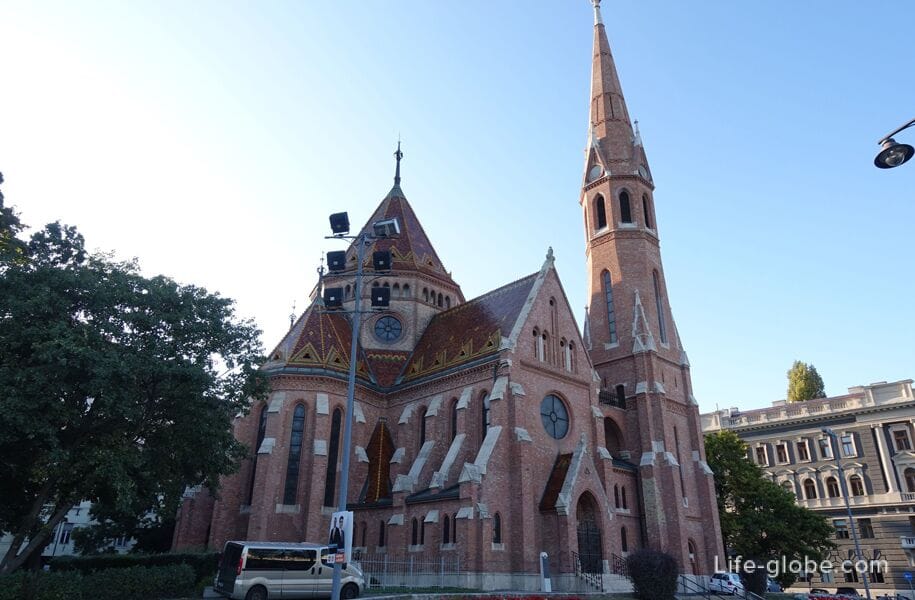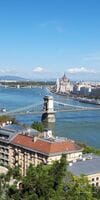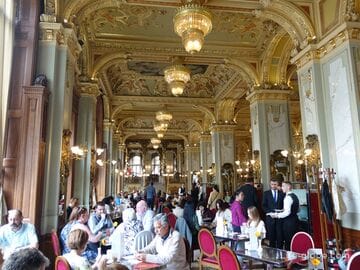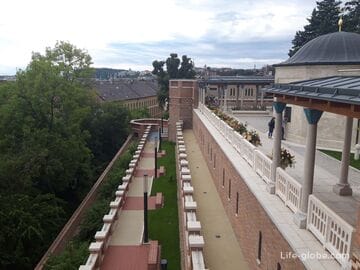The capital of Hungary - Budapest is divided into two parts by the river Danube, which is one of the sights of the city.
On the East side of the Danube is pest, and from the West - Buda. Both parts of Budapest were once independent towns later merged into one and formed the city of Budapest. Of course, the historical Buda and the pest side is more smaller areas than those parts of the city, which they are currently, but, nevertheless, relatively, the two parts of Budapest are still called Buda and Pest.
Buda and pest are connected by bridges passing over the Danube, both sides of which are embankments: embankment Buda is located on Buda side (Western side) and Pest, respectively, on the pest side (Eastern side).
With bridges and embankments of Budapest offers beautiful panoramic views of the Danube embankments, the bridges and the surrounding area. Also bridges and embankments are included in the Tops of the sights of Budapest.
Bridges Of Budapest
In the centre of Budapest, where the main touristic center and the main attractions of the city, over the Danube river are six bridges, each beautiful in its own way. For each of these bridges runs the transport, including both public and equipped with pedestrian areas on both sides of each bridge.
In addition to the bridges between Buda and Pest, in the warm season and in good weather, ferries. The website of the public transport of Budapest: bkk.hu/en/timetables.
Petofi Bridge
Petofi bridge (Petőfi Bridge, Hungarian name: Petőfi hid) - the most southern bridge tourist centre of Budapest, which is a three-tiered bridge with beams.
The bridge is named in honor of the national poet of Hungary, a revolutionary Democrat and one of the leaders of the 1848-1849 Revolution in Hungary - petőfi.
The bridge was built from 1933 to 1937 and rebuilt after the Second world war.
The length of the bridge, along with upgrades is 514 meters and a width of 25.6 meters.
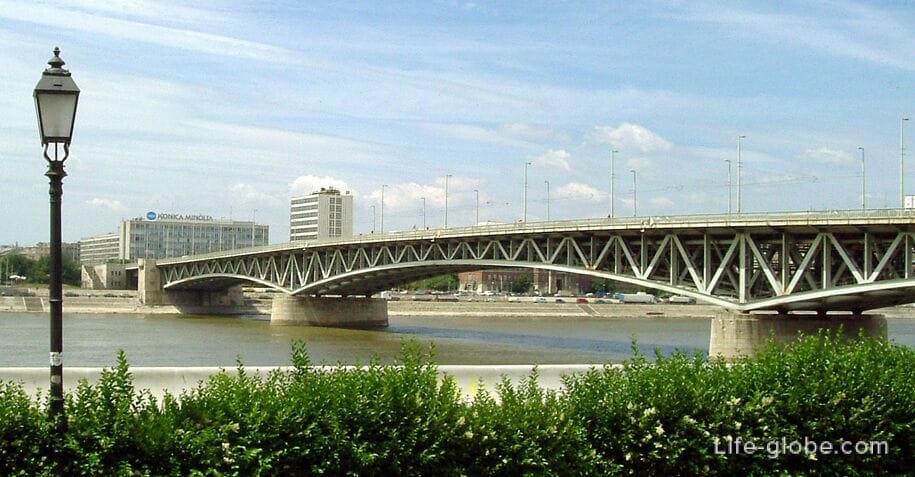
Liberty Bridge
Liberty bridge (Liberty Bridge, Hungarian name: Szabadsag Hid) - the shortest of the Budapest bridges.
The bridge was built in 1894 - 1896 years, has a length of 333 meters and width 20 meters.
The main decorations of the bridge are statues of mythical Hungarian bird turusov located in the upper parts of the columns of the bridge.
The Liberty bridge connects the Central market of Budapest, near which originates the main tourist street, the Vaci street, located on the pest side, with the southern part of Gellert hill, and therapeutic baths and swimming pool gellert, located on the Buda side.
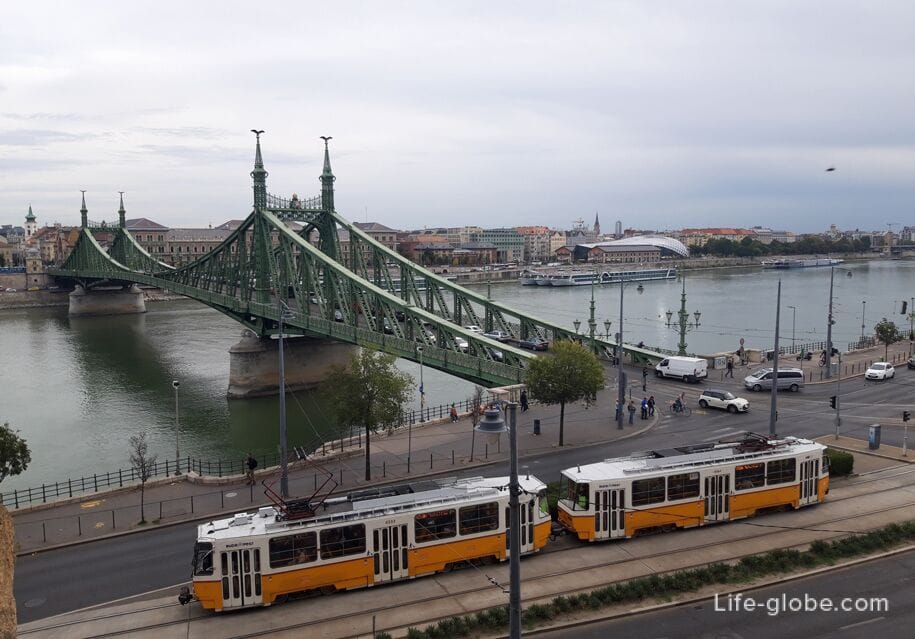
A view of the liberty bridge and the Petofi bridge from gellért hill

The Erzsébet Bridge
The erzsébet bridge or Elisabeth bridge (Elisabeth Bridge, Hungarian name: Erzsebet hid) is one of the newest bridge in Budapest.
The bridge having eclectic style, was built between 1897 and 1903 years, has a length of somewhere 378,6 meters and is named after Elizabeth of Bavaria, a popular Queen and Empress of Austria-Hungary, who was assassinated in 1898. Today, her large bronze statue located near the Western end of the bridge, on the Buda side, in the middle of a small garden.

Queen Elizabeth statue
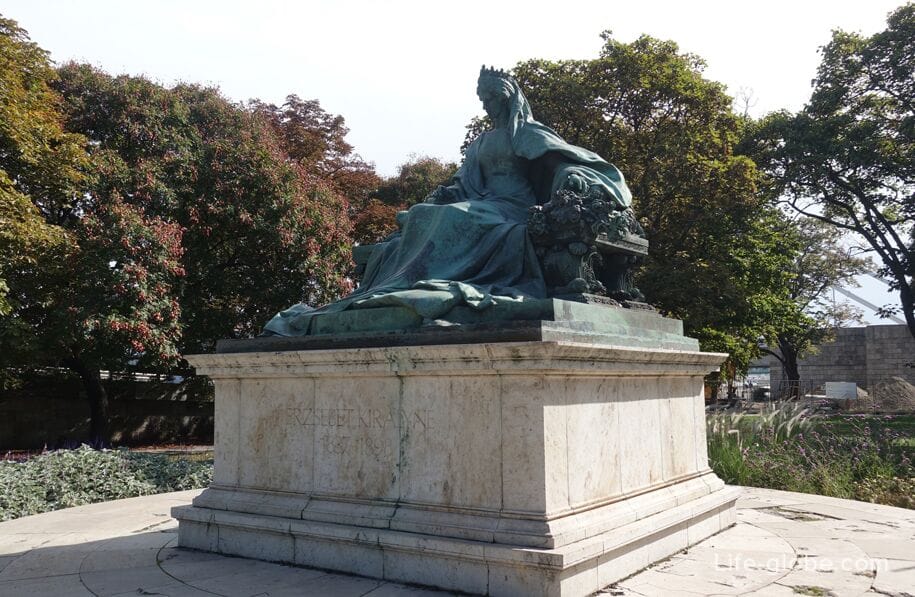
The erzsébet bridge connects the Central historical part of pest, with the Northern end of the gellért hill and the southern tip of Castle hill, which is one of the most prominent Budapest attractions - Buda castle.
Széchenyi chain bridge
Széchenyi chain bridge, often simply called the Chain bridge (Szechenyi Chain Bridge Hungarian Szechenyi Lanchid name) - the most beautiful and popular bridges of Budapest.
It was the first permanent bridge across the Danube river.
The bridge was opened in 1849 and named in honor of the Hungarian politician count istván széchenyi, a major supporter of its construction. After the erection of this bridge has become a symbol of progress, of national awakening and connection between East and West.
The chain bridge connects the homonymous square of Budapest located on the pest side, with Adam Clark square (Clark Adam ter), on the Buda side, where we are: the sculpture "zero kilometer Stone", the lower station of the funicular on the Castle hill and the tunnel under the Castle hill.
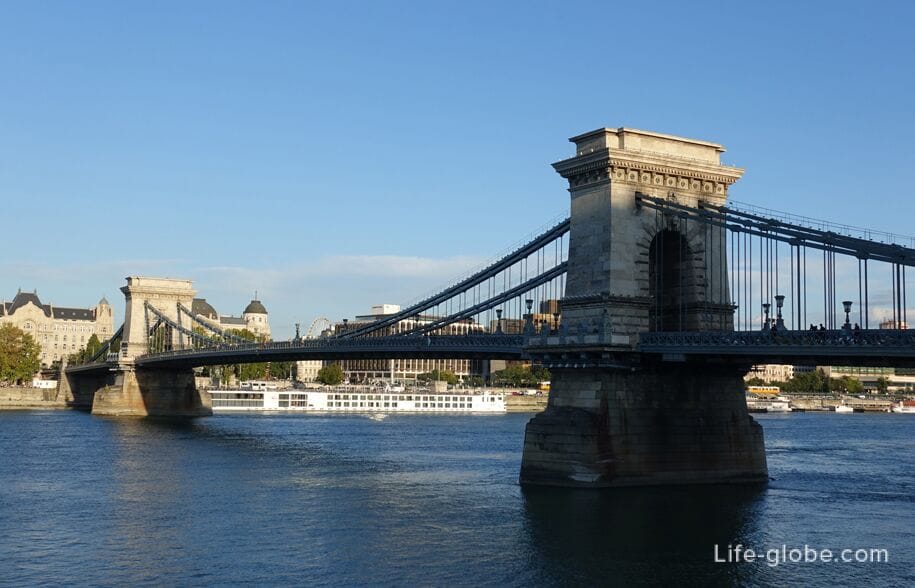
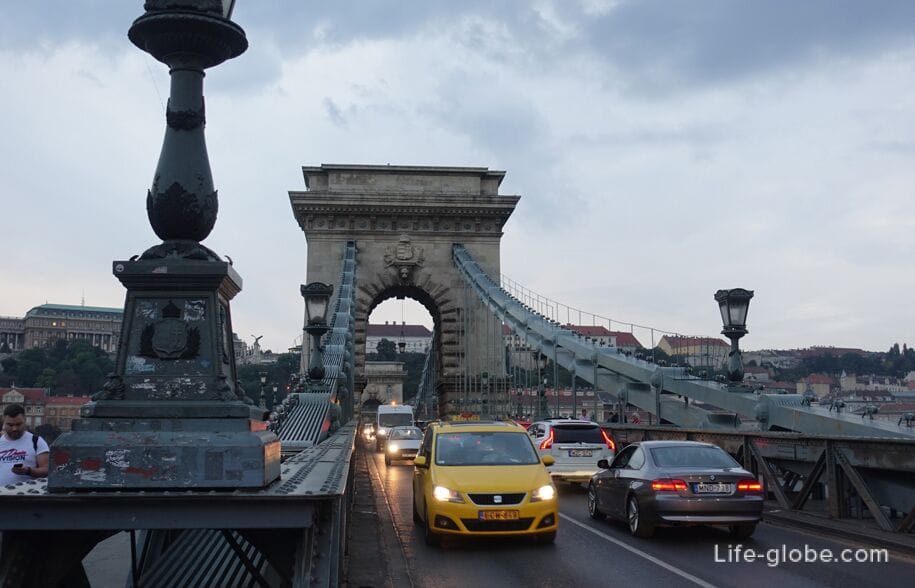
Margaret Bridge
Margaret bridge or Margaret bridge (Margaret Bridge, Hungarian name: Margit hid) is one of the oldest in Budapest and triangular, it not only connects the sides of Pest and Buda, but also from the bridge you can go down to the eponymous Margaret island, a public city Park and on which there are places for walking and recreation, cafes and restaurants, a fountain, mini zoo, promenades, and attractions, hotels and baths.
The Margaret bridge was designed by French engineer Ernest Guen and built by the construction company, Maison Ernest Goüin et Cie. between 1872 and 1876 years. It was the second permanent bridge in Budapest after the Chain bridge.
The remarkable Margaret bridge and also the fact that its design consists of two parts connected in one bridge next to the Margaret island, located to each other at an angle of 165°.
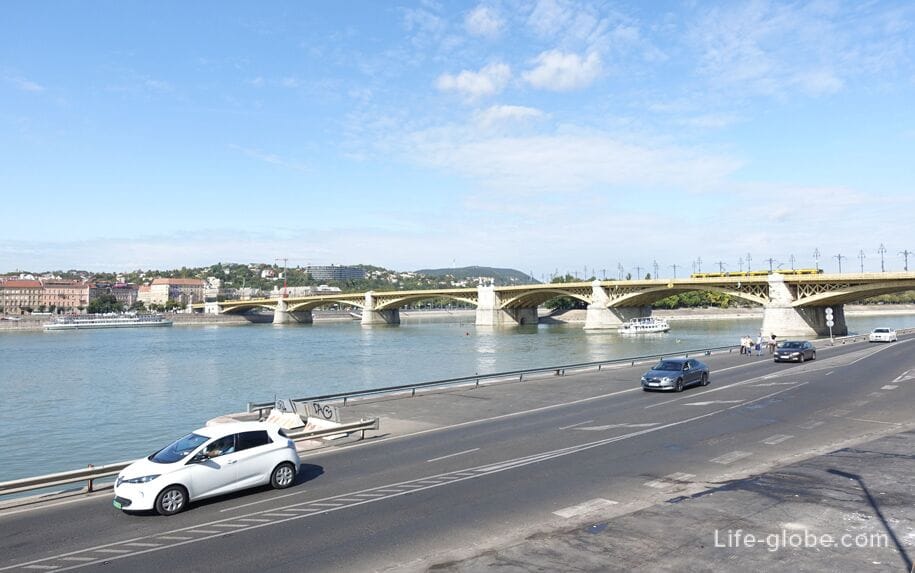
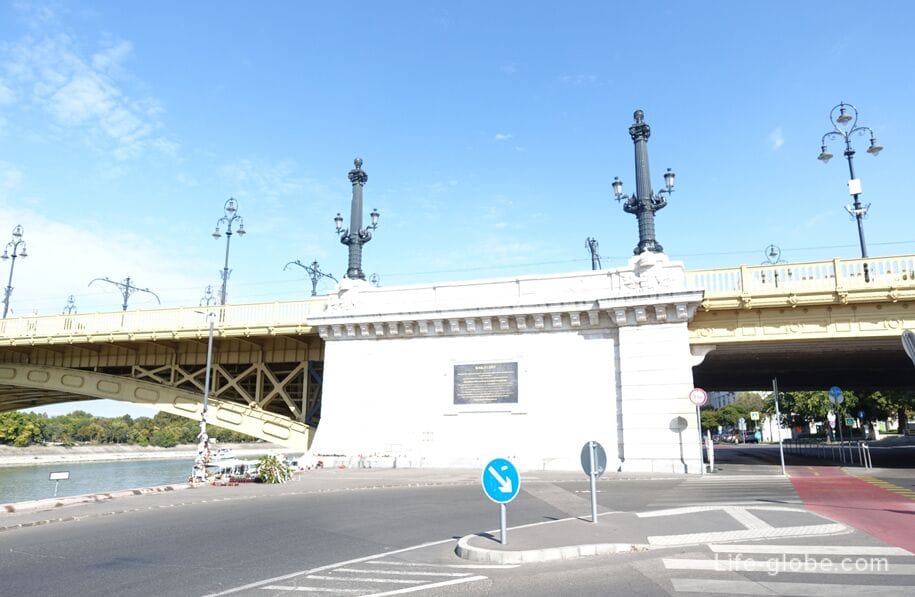
The Bridge Arpad
The bridge Arpad (Arpad hid) - the most Northern bridge tourist part of Budapest, but also the most seldom visited due to its remoteness from the main attractions and tourist routes in the city.
This is the longest and the busiest vehicle bridge in Budapest.
The bridge on the site of the Arpad bridge still existed at the time of the ancient Romans and linked the ancient city of Aquincum (now the archaeological Museum Aquincum) with the castle on the pest side.
Construction work on the construction of the bridge was started 1939, then abandoned during the Second world war, was continued in 1948 and was completed only in 1950.
From this bridge you can go to Margaret island.

The pest embankment
Embankment on the pest side (Pest embankment) more popular than the embankment on Buda side, it is also more interesting.
Along the seafront is passing by the road, including runs through it and public transport, as well as lie on tram tracks. There are berths for cruise ships and pleasure boats,so you can go to one of the cruises on the Danube.
Duration of cruises-walks and programs are different. Is hour sightseeing cruises with welcome drink, a 3-hour sightseeing walk, there are evening included champagne and(or) dinner, live music, etc.
Information on cruises can be found on the place, or buy a cruise in advance. Link to cruises and other trips in Budapest...
You can also take a tour bus amphibious, which makes a walk around the sights of Budapest by road (landmarks on the pest side), and water (the Danube). The travel time is about 1 hour 45 minutes. The bus departs from the square of istván széchenyi. Audioguide in many languages, including Russian. Tickets can be purchased on the website.

The pest embankment between petőfi bridge and Liberty bridge
In this part of the promenade, notably the building of the Corvinus University.
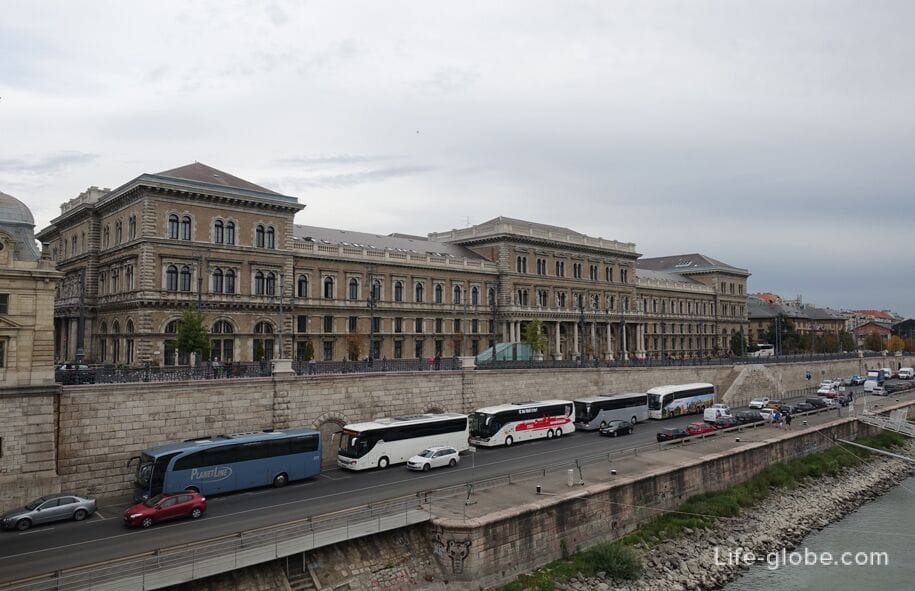
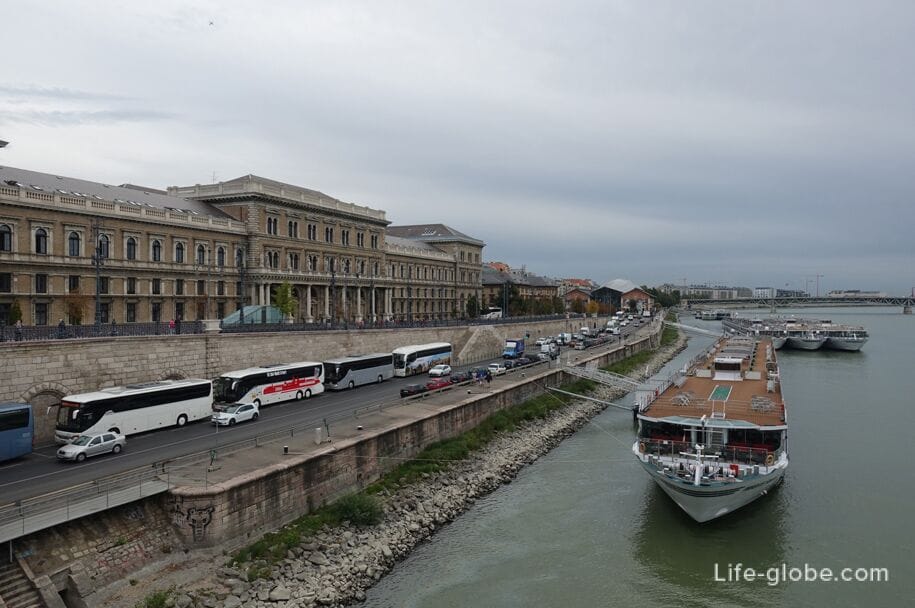
The pest embankment between the bridges of Freedom and Elisabeth
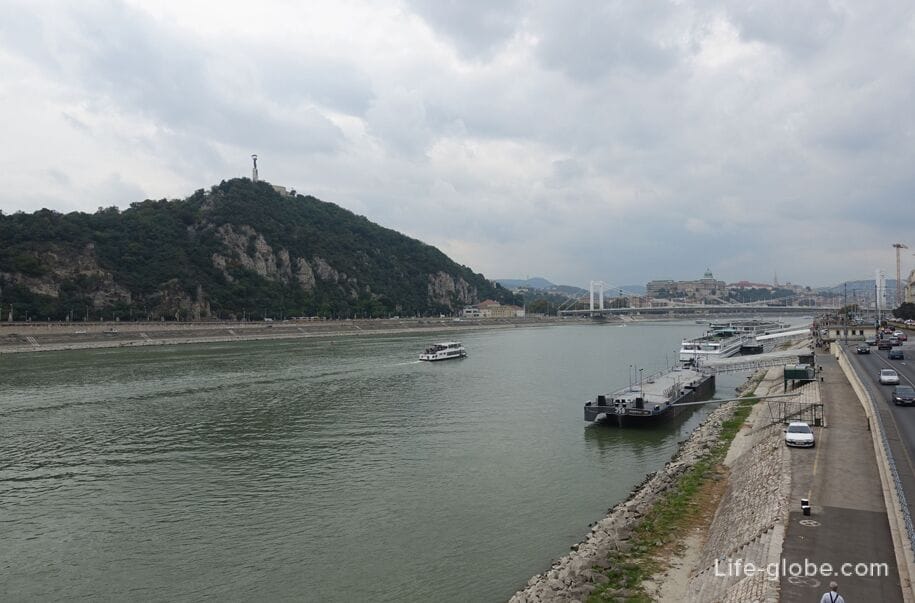

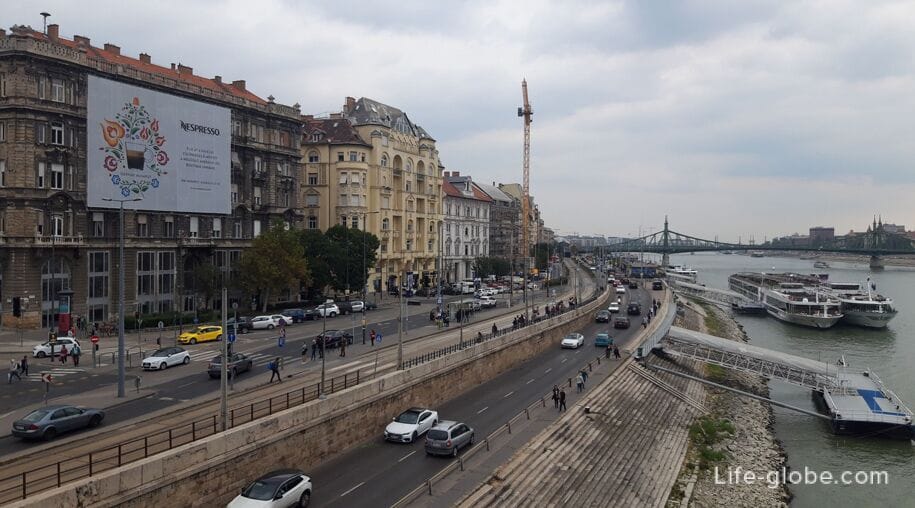
Close to the beach, near the Elisabeth bridge is the Church of the blessed virgin.
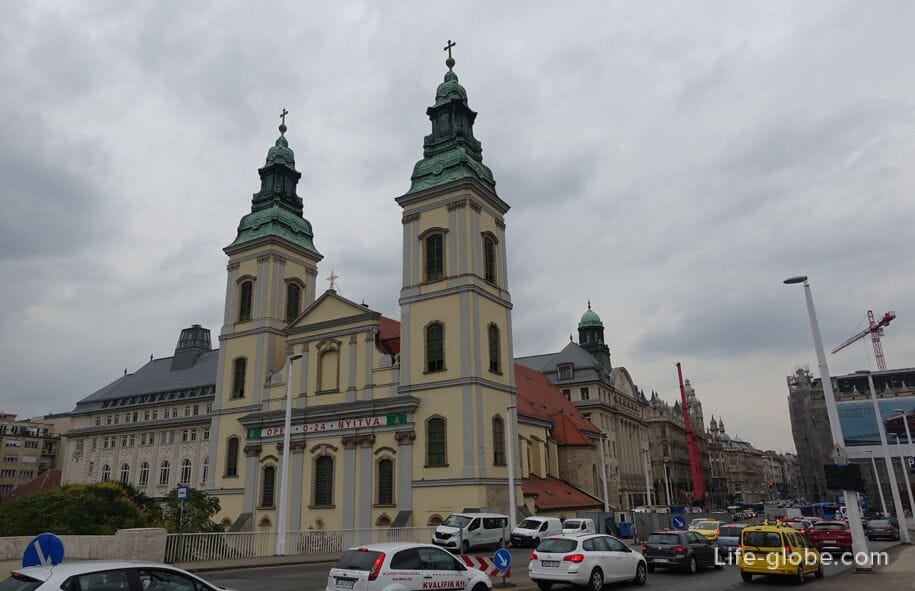
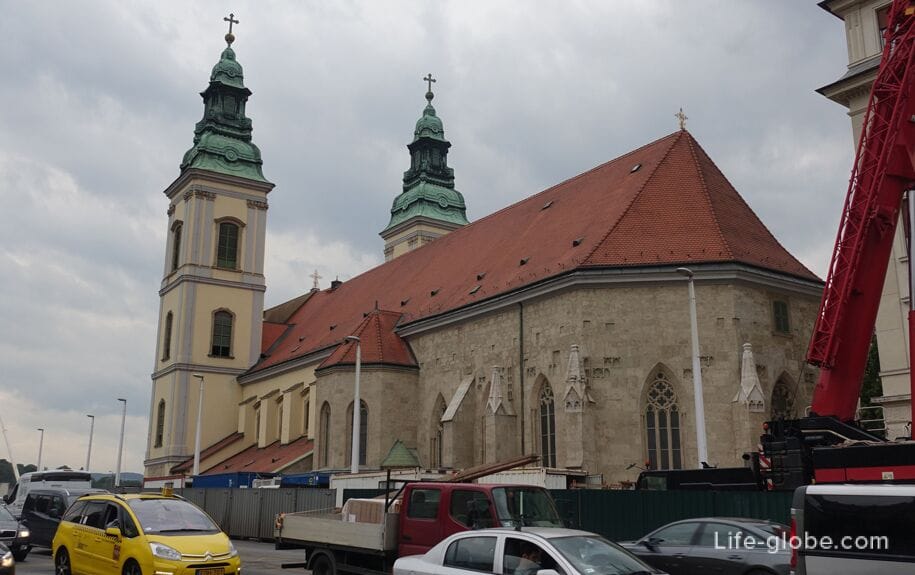
The pest waterfront between the Elisabeth bridge and the Chain bridge of Budapest
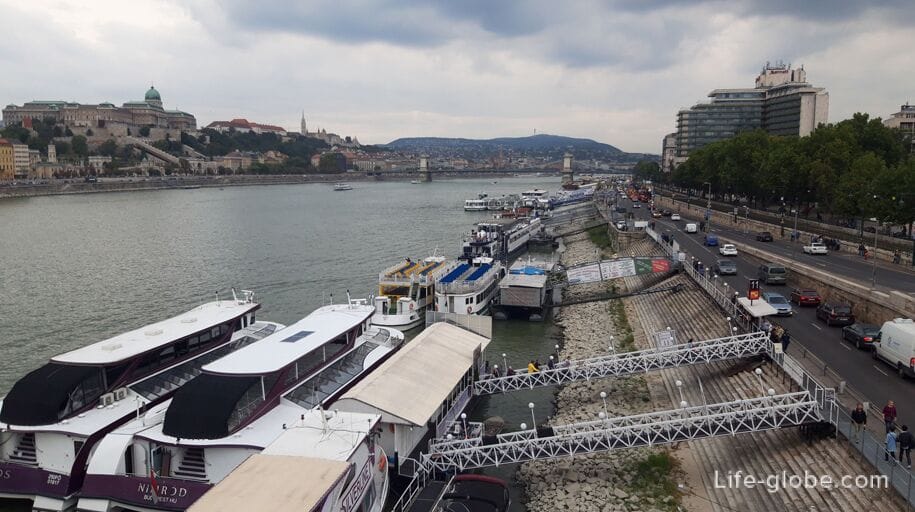

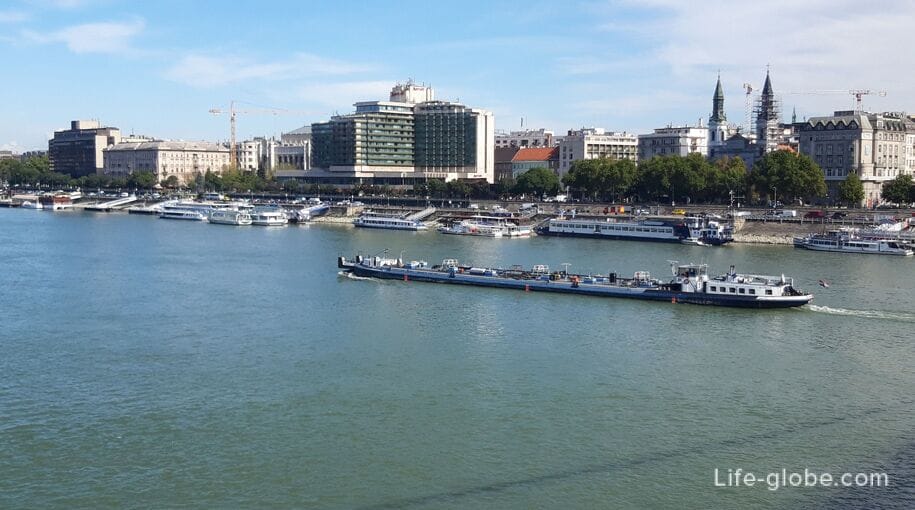
Along this part of the embankment of the pest side are:
- Shakespeare monument, located near the 5-star Budapest Marriott all rooms a panoramic view of the Danube;
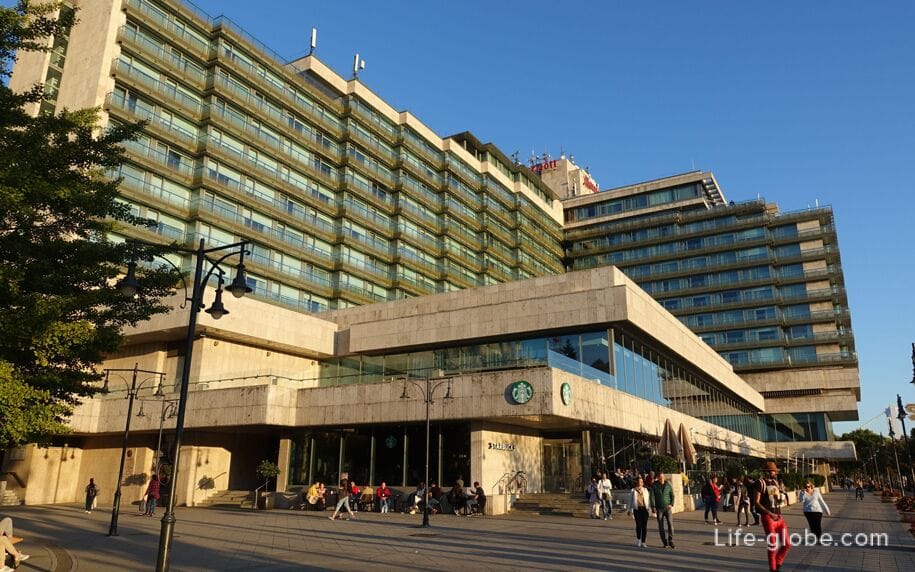
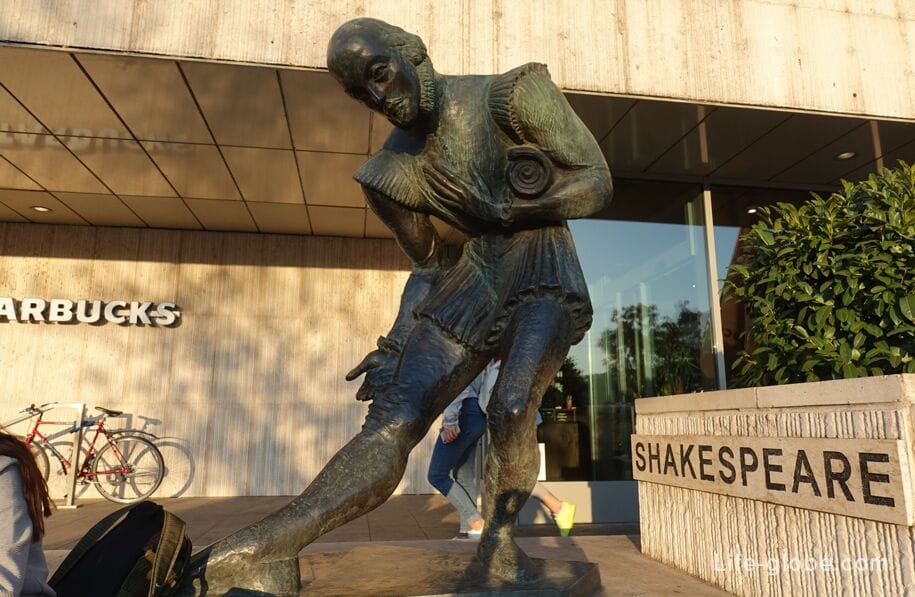
- Vigado concert hall, built in 1865 and is the second largest concert hall in Budapest;
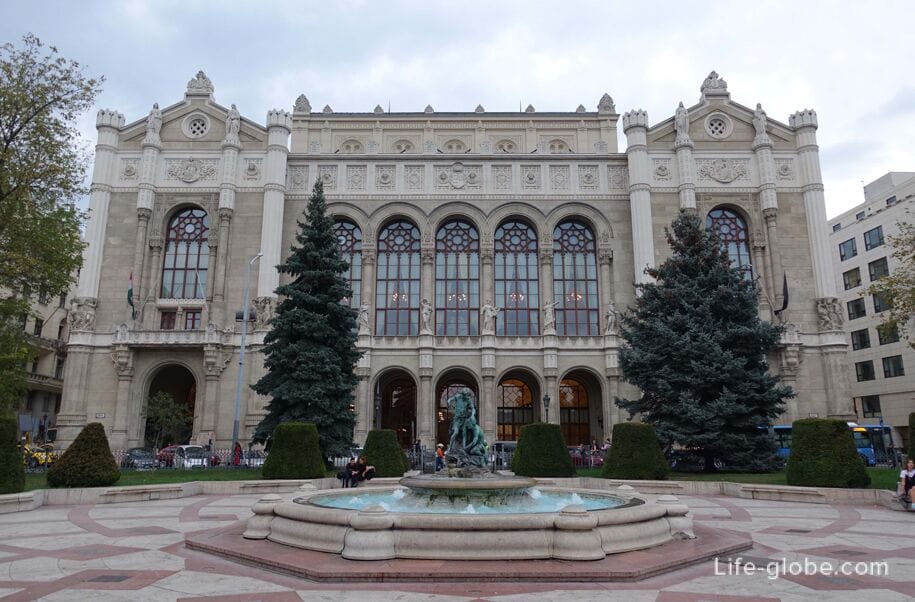
- the sculpture "Girl with dog";
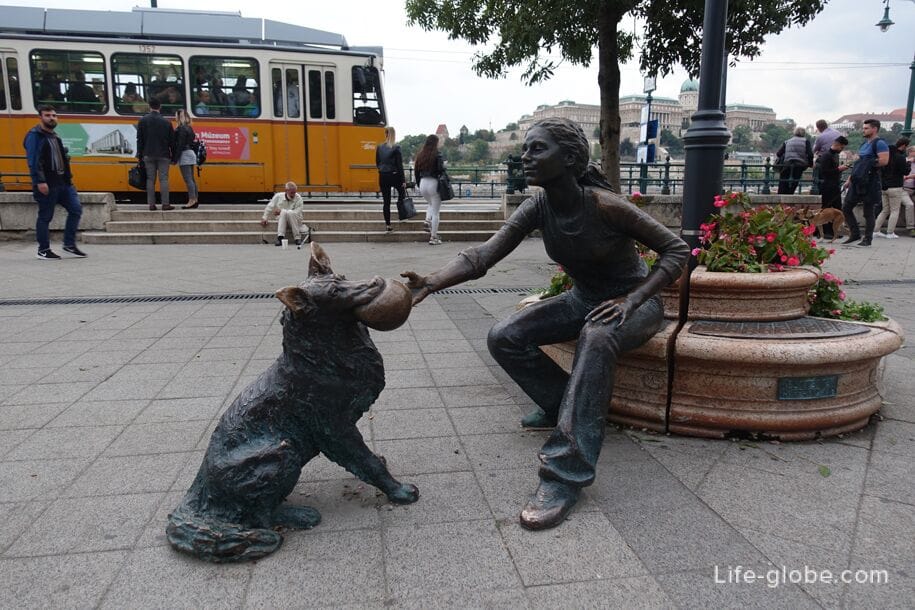
- sculpture "the Little Prince";

- cafes and restaurants;
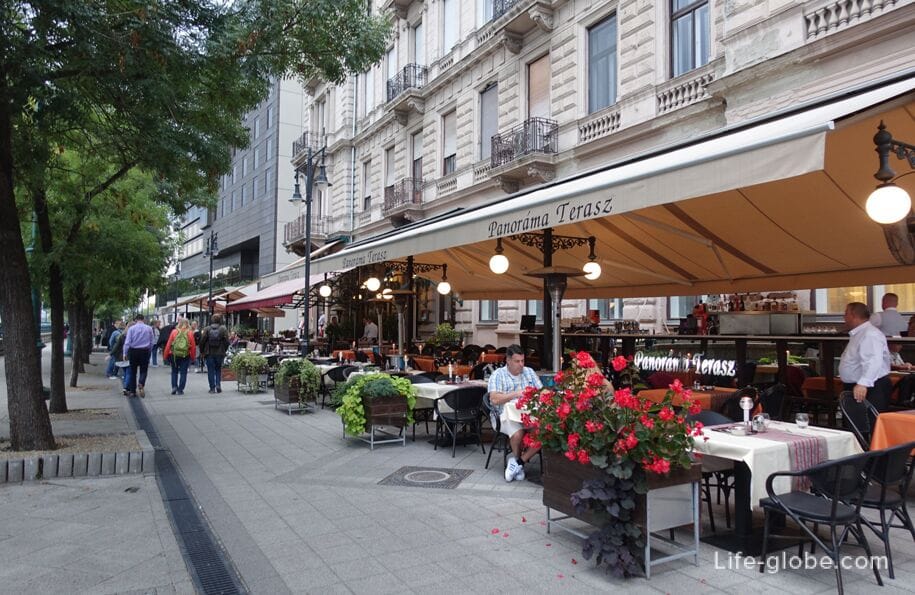
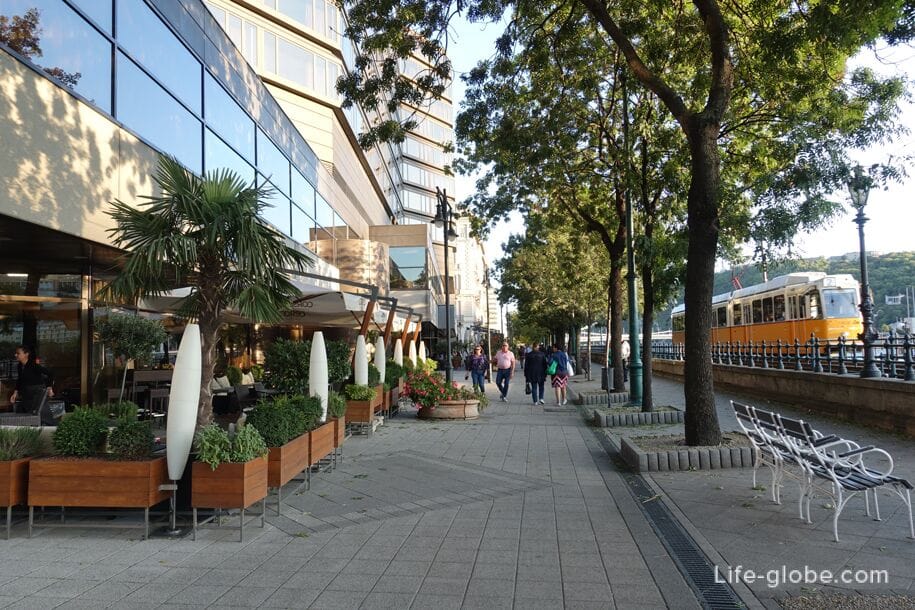
- a monument to the Hungarian artist Ignaz Roscovich, captured in the process of creating the next masterpiece;
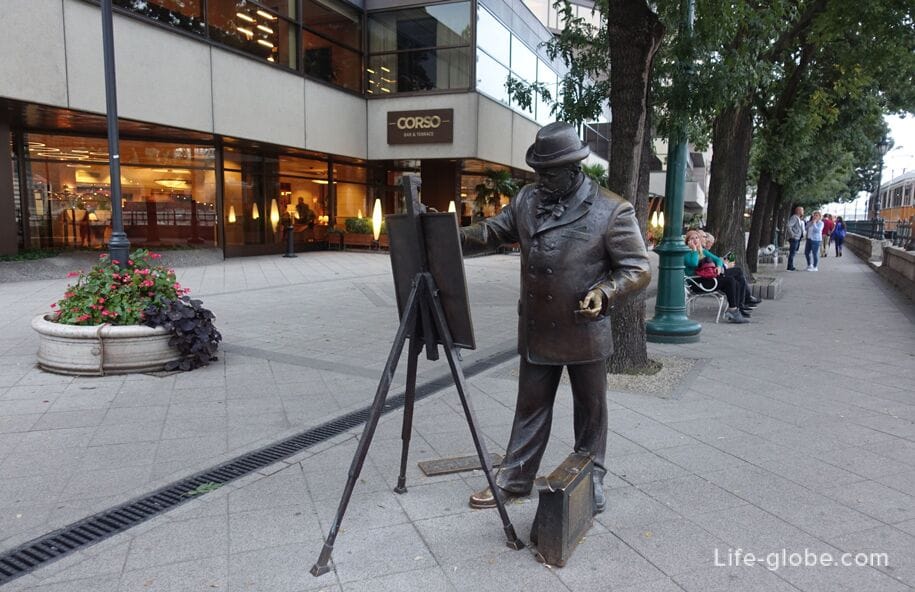

- a monument dedicated to józsef etves and the building, which is a 5-star hotel InterContinental Budapest.
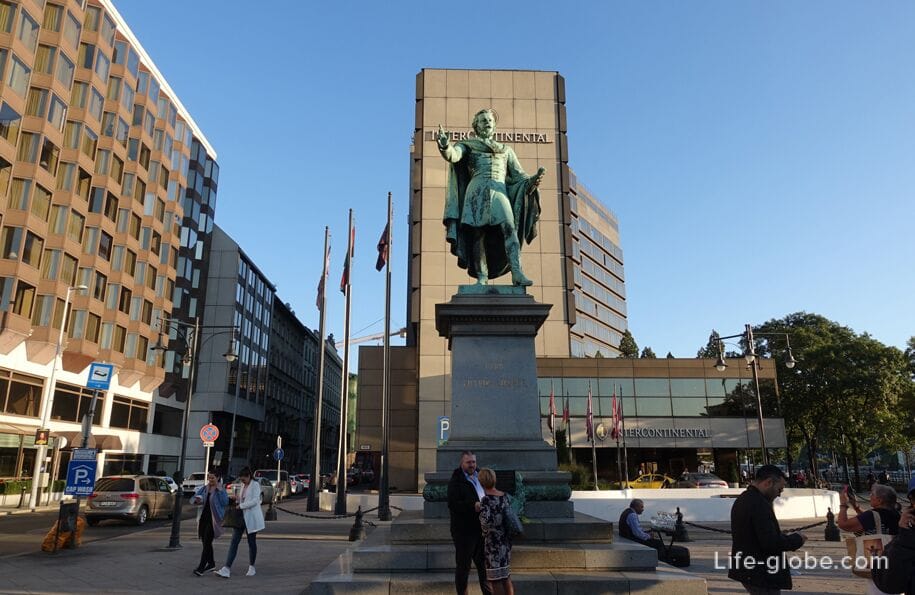
Near the Chain bridge stretches széchenyi square, the main attractions are:
- the Gresham Palace (Gresham Palace, Hungarian name: Gresham-palota), built in the early 20th century (1904-1906) in the art Nouveau style as an office-residential center for senior employees of Gresham.
Currently, the walls of the historic Gresham Palace is one of the most luxurious hotels of Budapest - 5-star Four Seasons Hotel Gresham Palace Budapest;
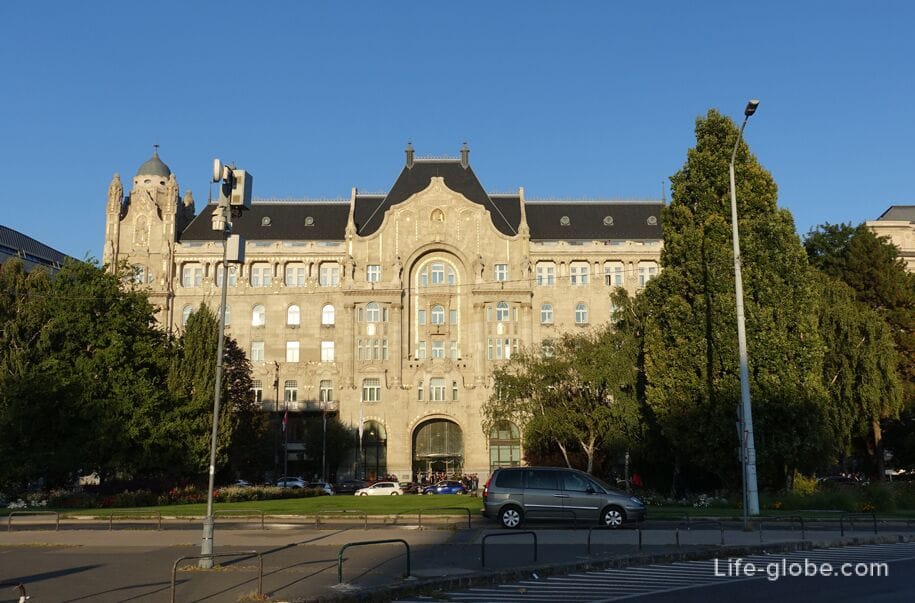
- the building of the Ministry of Internal Affairs.
The original building was office and until 1950 was the headquarters of the Hungarian commercial Bank of pest. Two dates on the facade, engraved with the Roman numerals refer to the basis of the former Bank (1841) and the year of transfer of the building (1905);

- the building of the Hungarian Academy of Sciences, the origin of which began in 1860, when the national collection was decided to build a headquarters. The design competition was announced in 1861. The winning design in the neo-Renaissance style was introduced by Friedrich August Stylemom. Construction began in the spring of 1862. The opening of the building took place on December 11, 1865;

- and also: the bust of Gabor, a monument to istván széchenyi, a monument to the Hungarian politician Ferenc deák, the, casino Las Vegas (Las Vegas Casino) and 5-star luxury hotel Sofitel Budapest Chain Bridge.
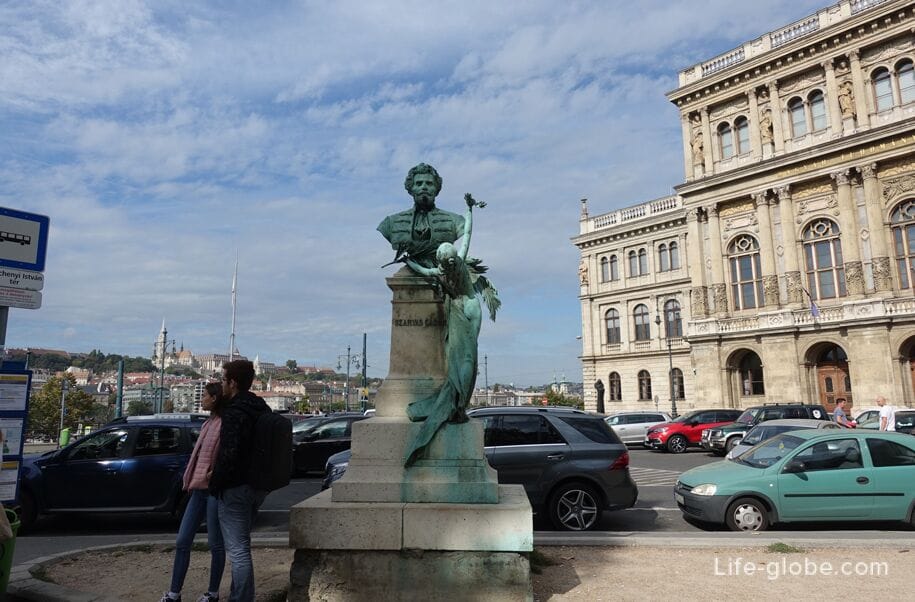
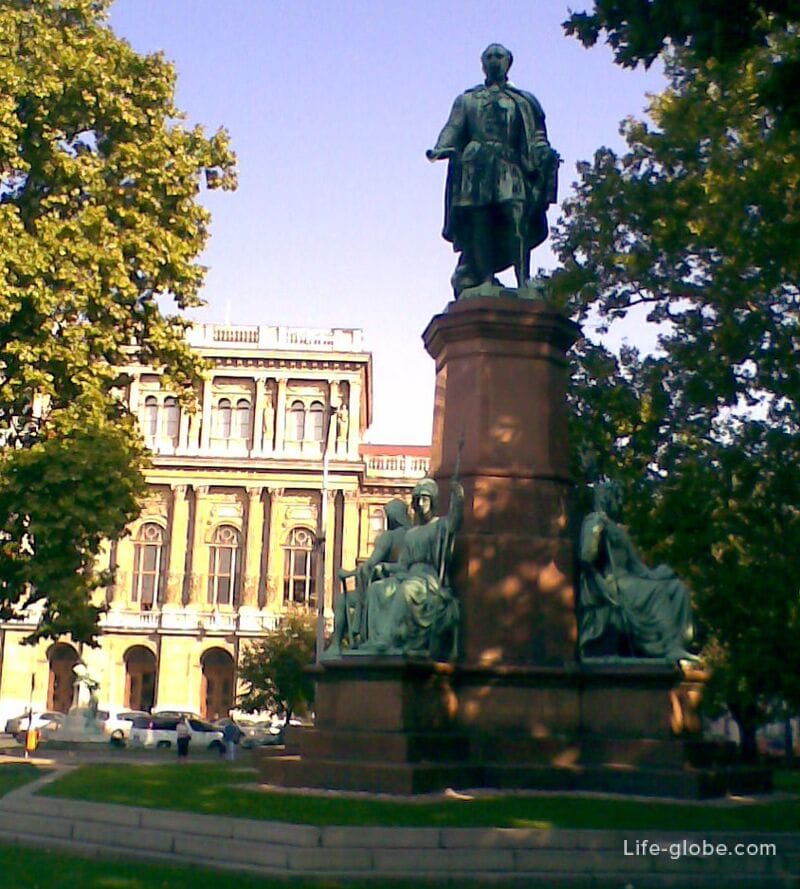

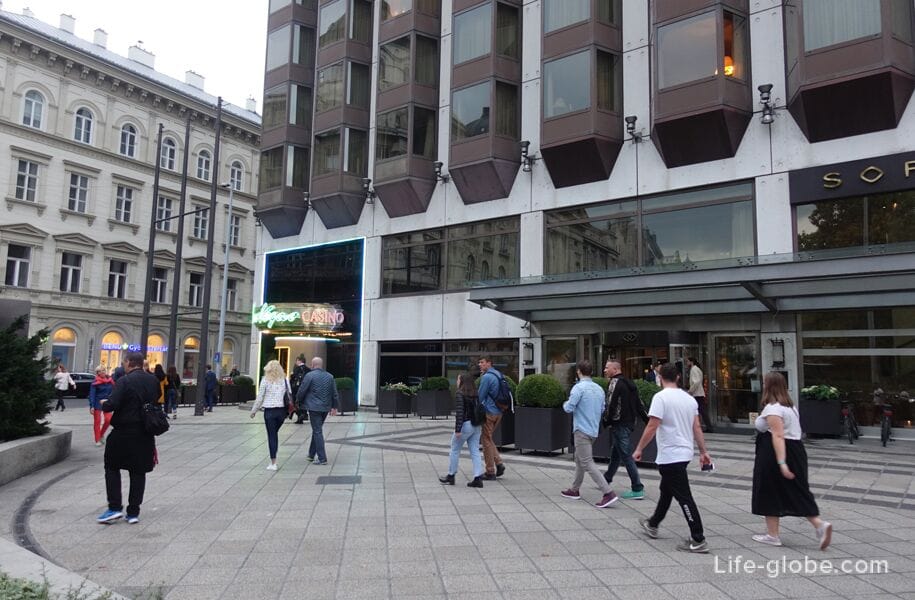
The pest embankment between the Chain bridge and Margaret bridge
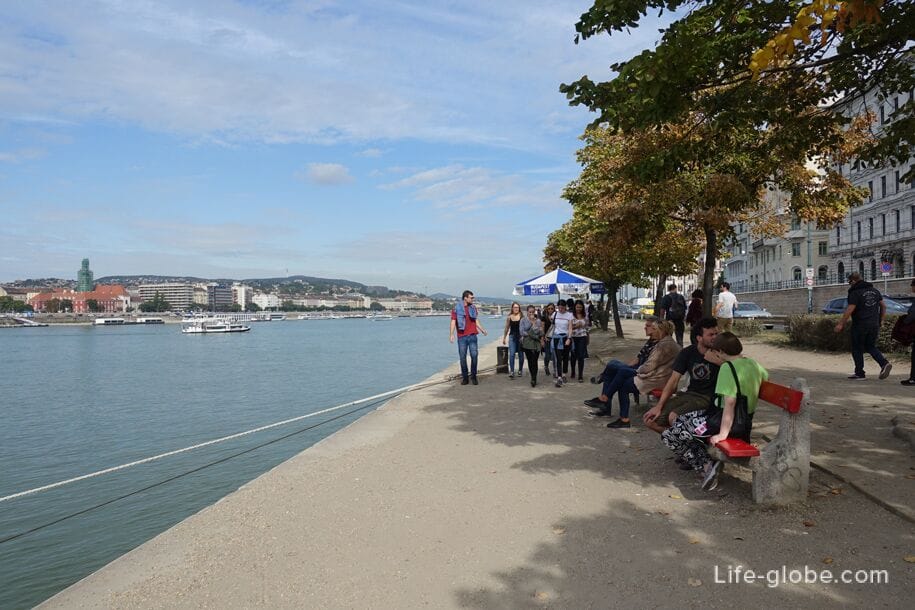
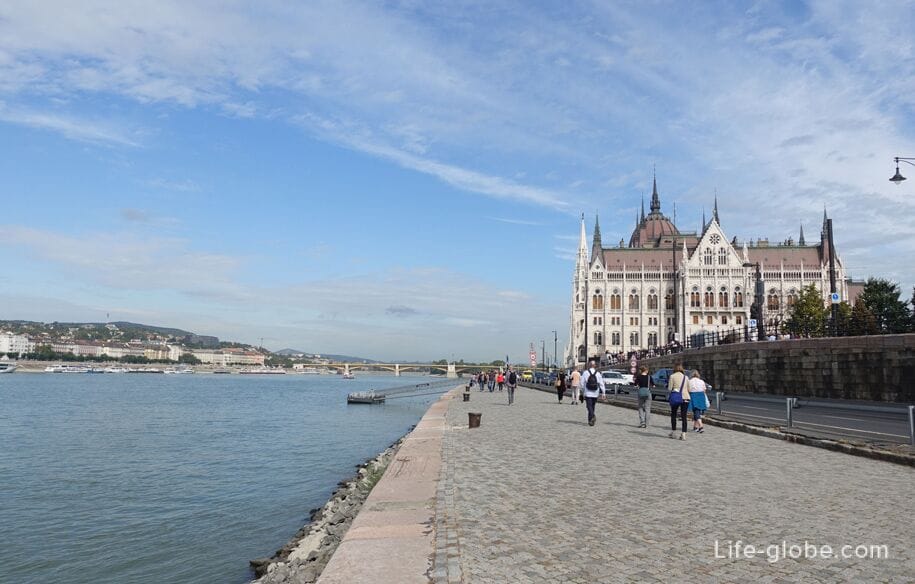


In this part of the promenade is remarkable:
- sculpture of "Shoes on the Danube promenade", which is a memorial erected in memory of the victims of the Holocaust, initially consisting of 60 cast-iron Shoe sample shoes 1940-ies and is dedicated to the memory of those who were shot on the banks of the Danube by the Hungarian Nazis.
The memorial was opened in 2005 to mark the 60th anniversary of the Holocaust, and since then, he silently recalls the tragedy that Budapest will never forget;
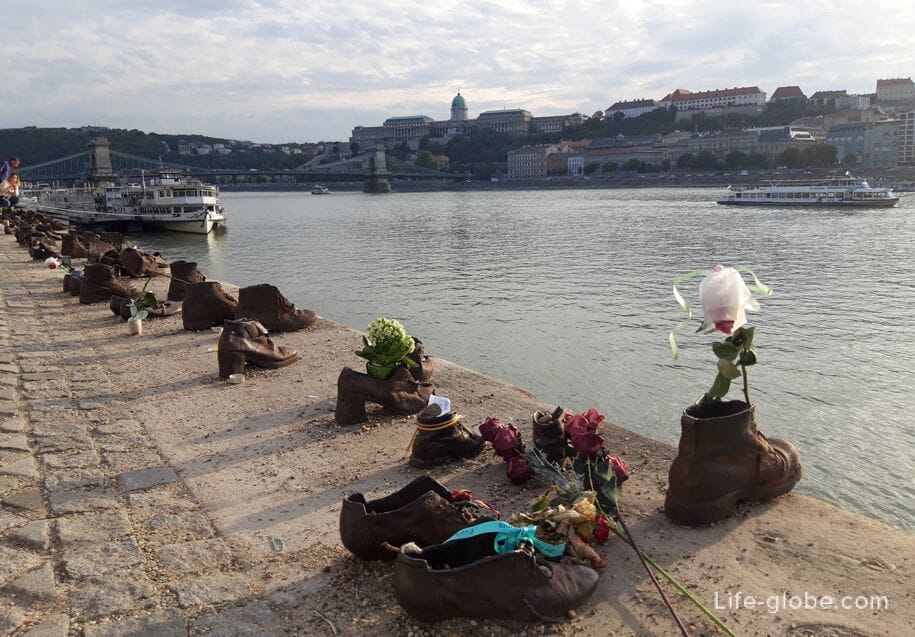
- a statue-a monument to Attila józsef, located on the stairs leading to the center of the Kossuth square.
Hungarian poet is depicted sitting on the steps and ran thoughtfully a sad look to the ground, with his hat in his hands and a cloak carelessly thrown around. Attila józsef committed suicide at the age of 32 by throwing himself under a train;

- the Hungarian Parliament building (Orszaghaz - Orszaghaz), which is one of the most beautiful buildings of the parliaments of the world and the most beautiful buildings of Budapest.
The construction of the building was carried out in the period from 1885 to the years 1902-04.
The Western facade of the Hungarian Parliament building runs parallel to the Danube, and the other three (East, North and South) faces the Kossuth square.
Prominent Domed tower of the Parliament buildings, heading into the heavens graceful spire has a height of 96 meters, the same height as the St. Stephen's Basilica, located a kilometer from the Kossuth square.
In addition to the inspection of the facades of the houses of Parliament, perhaps visiting some of the internal spaces in the tour group. Read more about Hungarian Parliament building in Budapest...
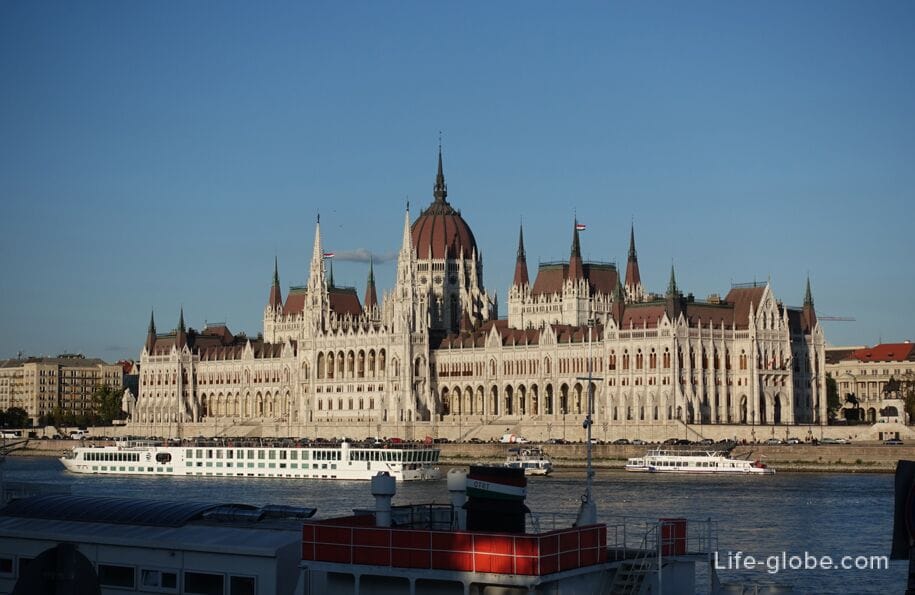
- bust of istván Bibo;
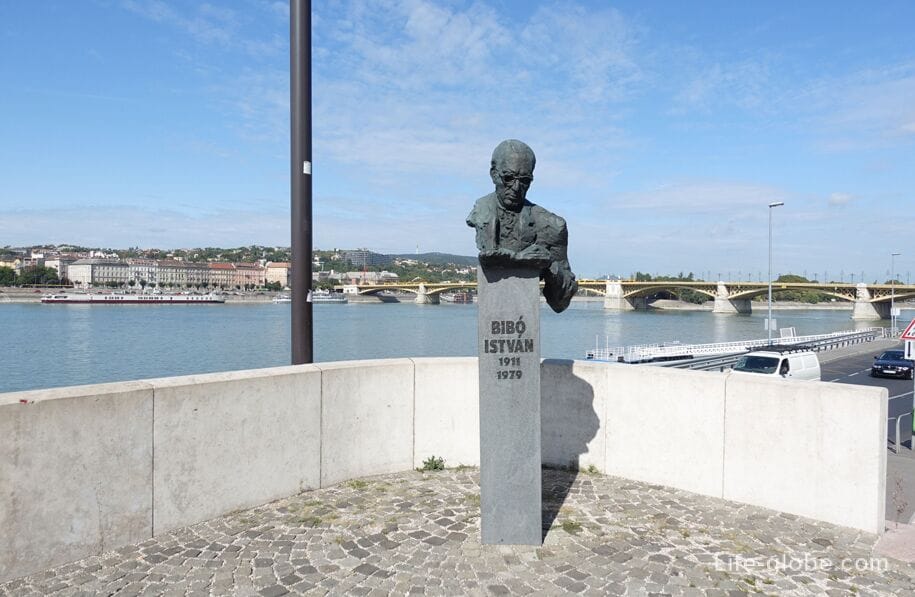
monument to Prime Minister Imre Nadu.
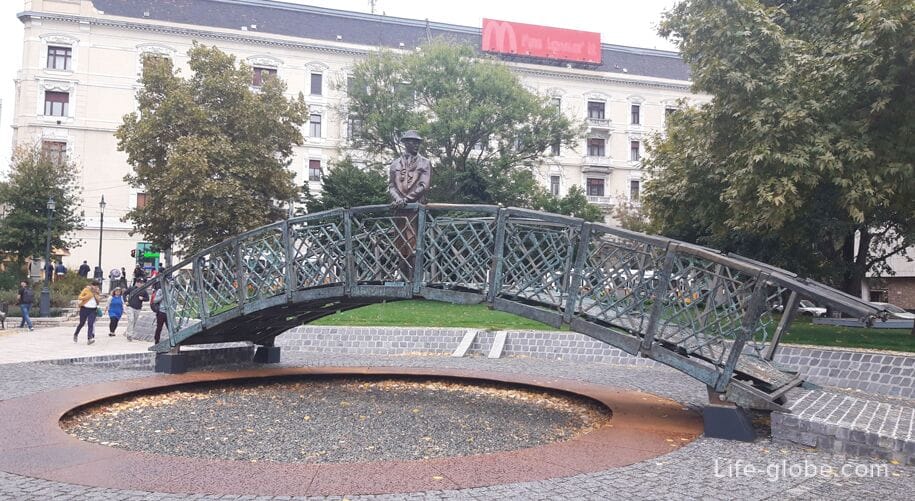
The Buda embankment
The Buda embankment, the most remarkable panorama of the hilly side of Buda seen from the bridges and the Pest embankment, including such famous attractions as the Royal Palace, Matthias Church and Fisherman's Bastion.
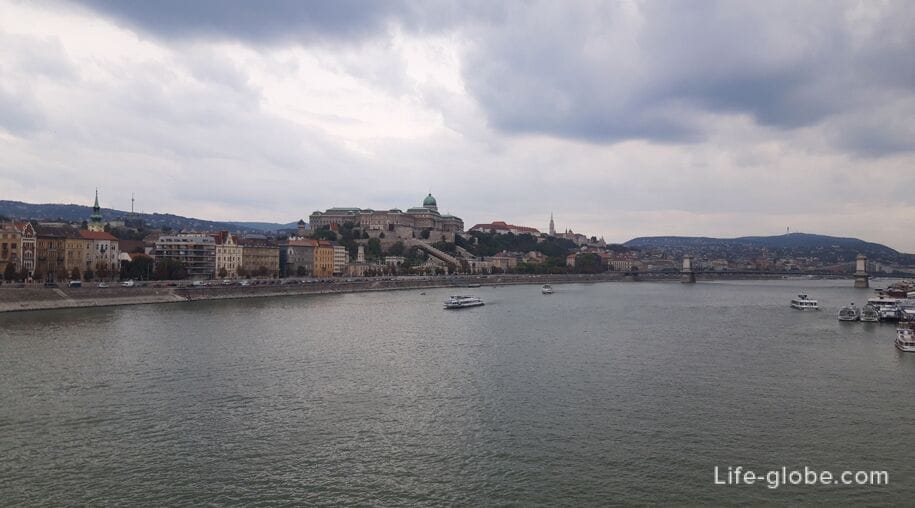
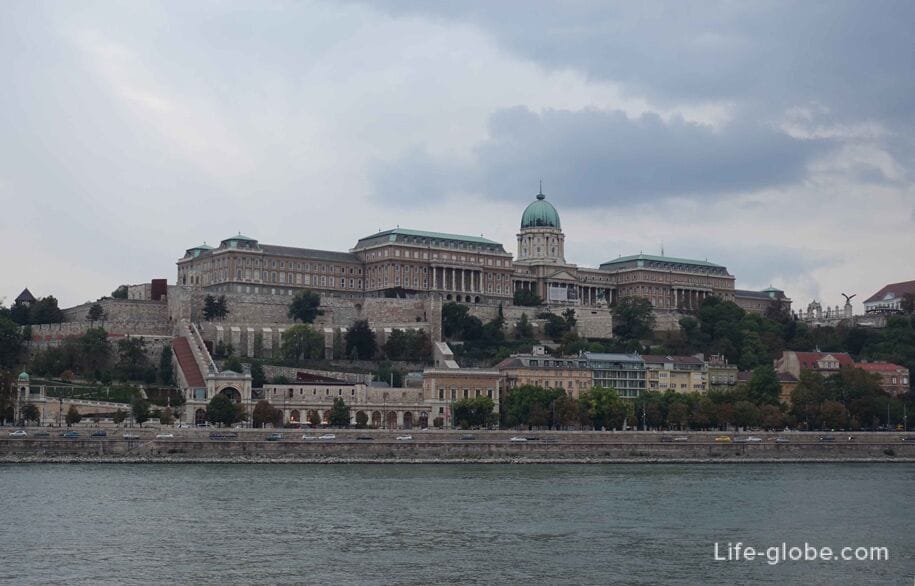
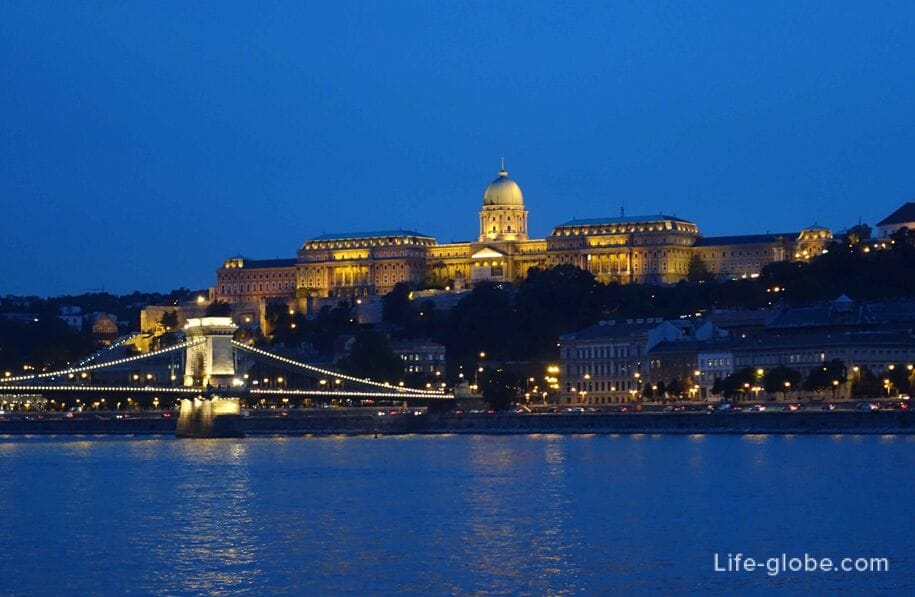
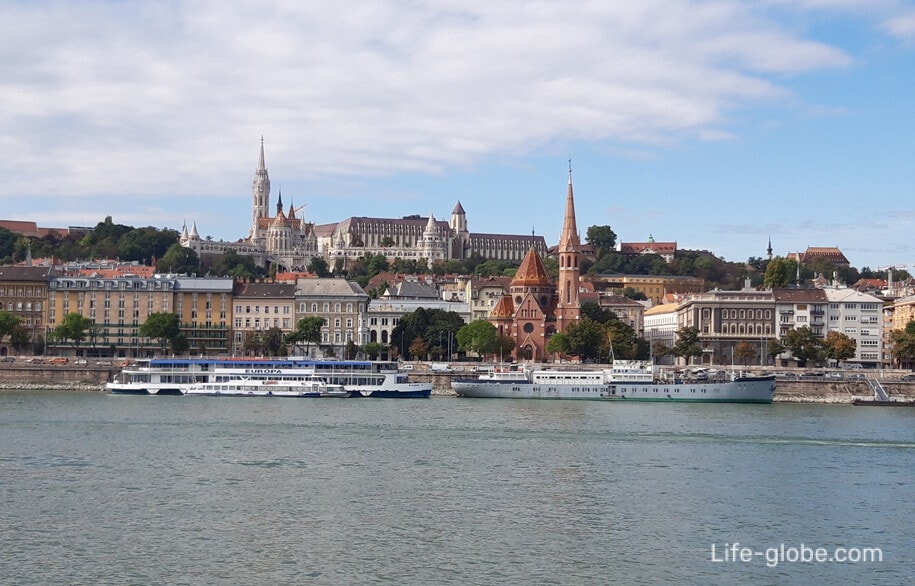
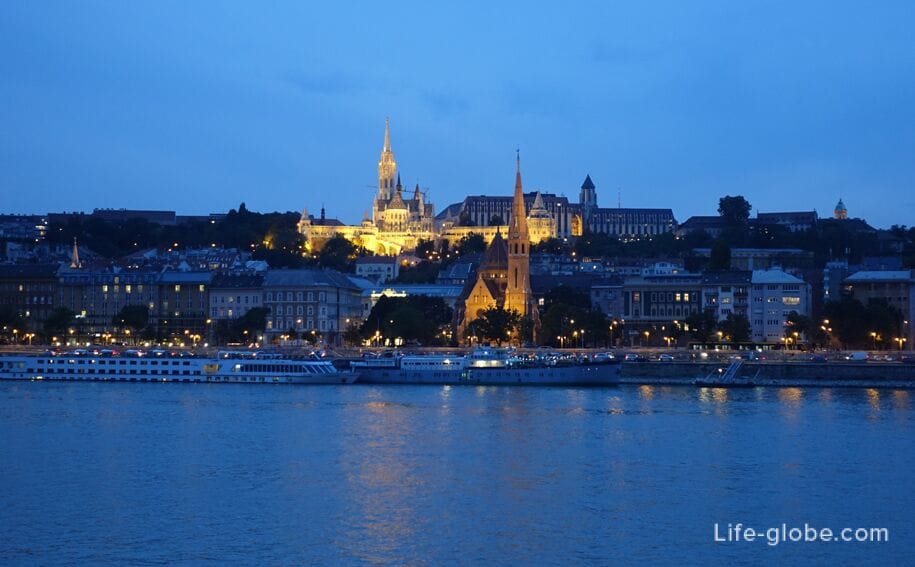
The Buda embankment between petőfi bridge and Liberty bridge
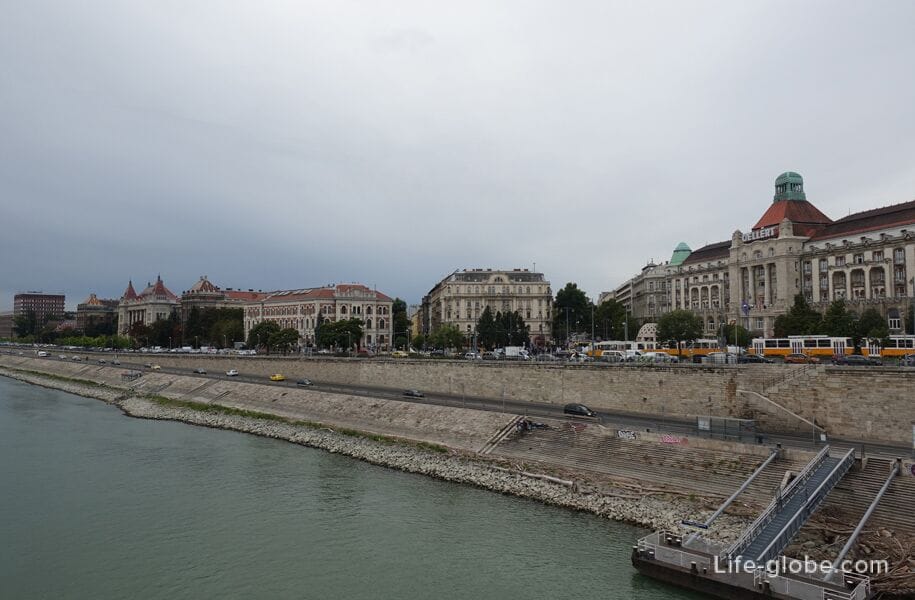
In this part of the promenade is remarkable:
- the building of the Budapest University of technology and Economics;
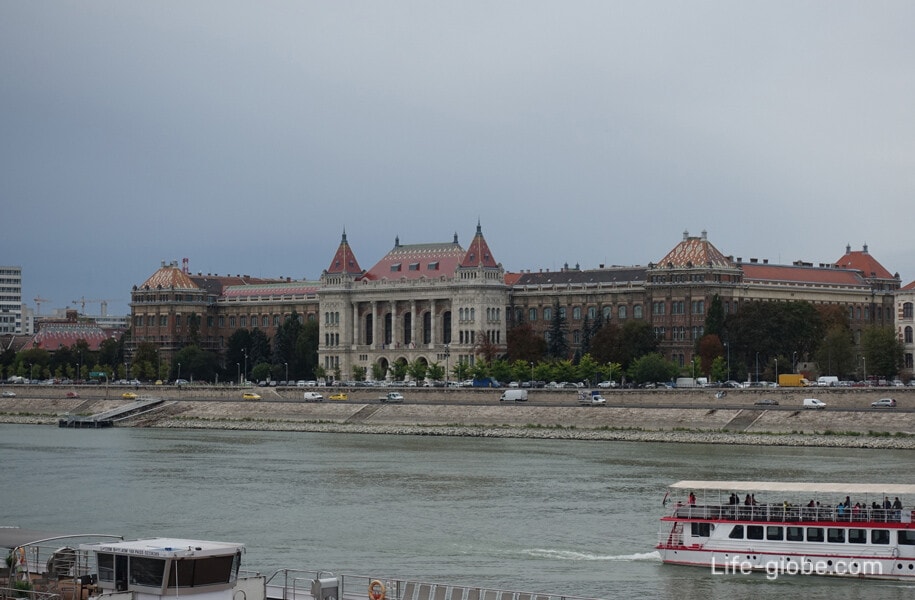
- therapeutic baths and swimming pool gellért, located near the Liberty bridge.
In a building with thermal baths, Gellert is conveniently located in the eponymous 4-star Danubius hotel Gellert offers a restaurant, bar, private Parking, free Wi-Fi and Breakfast included in the room rate.
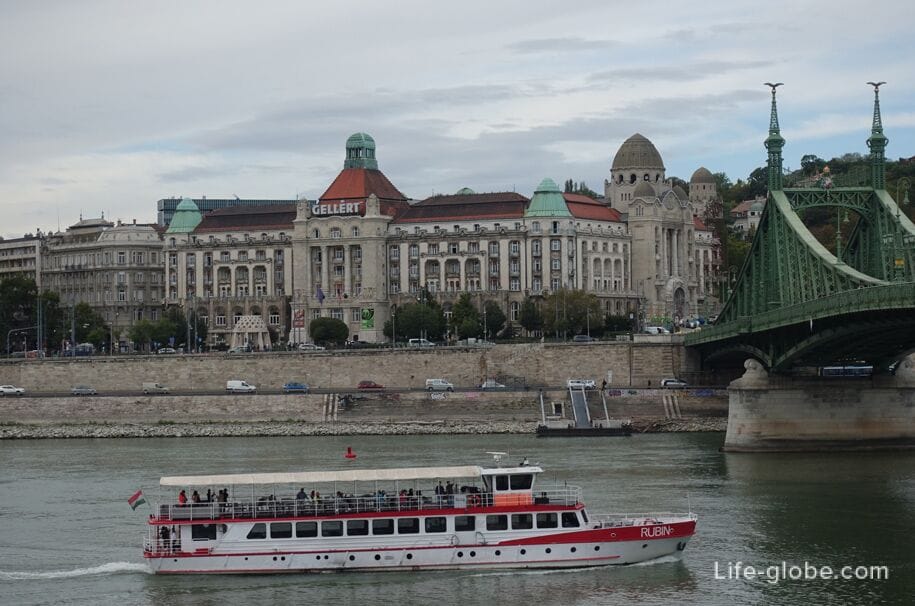
The Buda embankment between the bridges of Freedom and Elisabeth
This part of the embankment lies at the foot of the gellért hill, where remarkable: the rock Church of our lady of the Rock (Magyarok Nagyasszonya-sziklatemplom) and bagno a "Rudas". Read more about all the baths in Budapest...
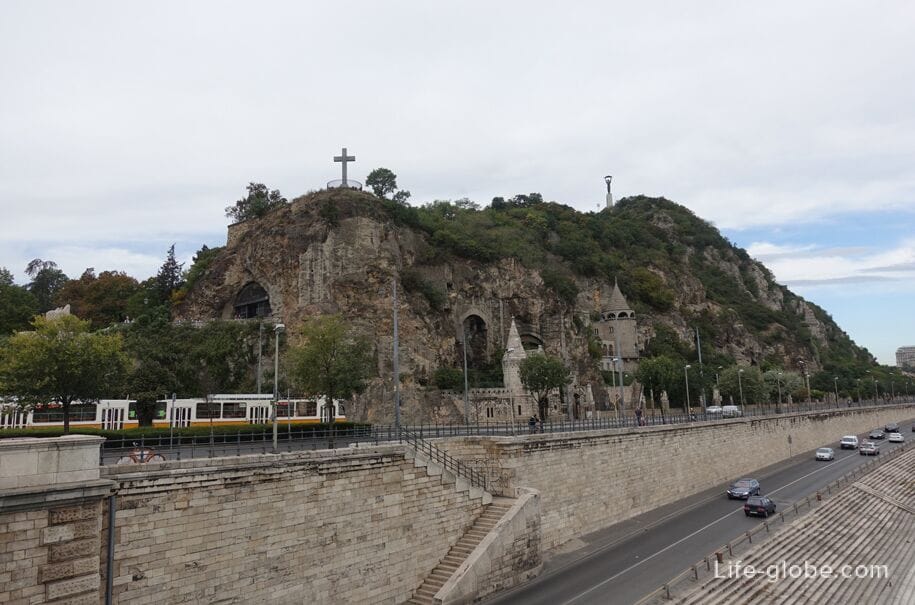
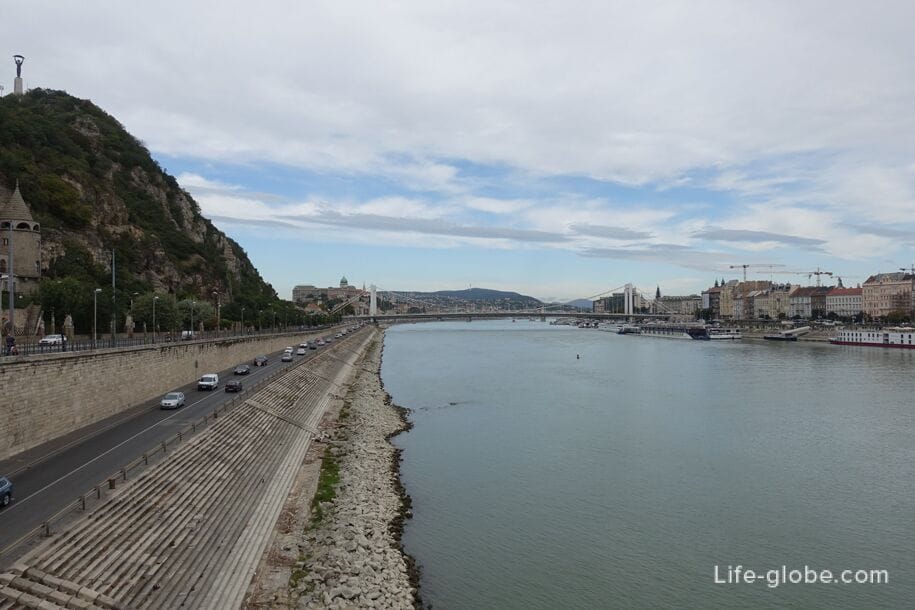
The Buda embankment between the Elisabeth bridge and the Chain bridge of Budapest
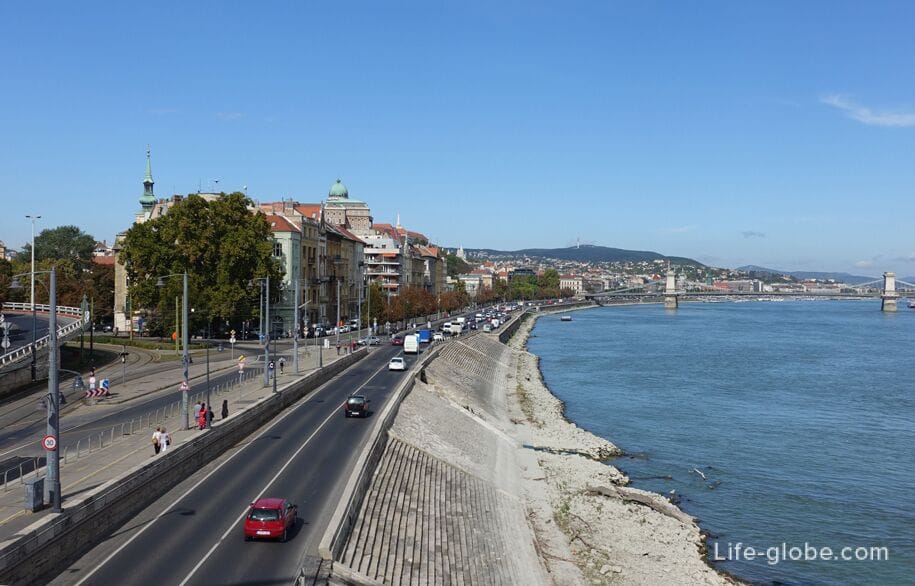
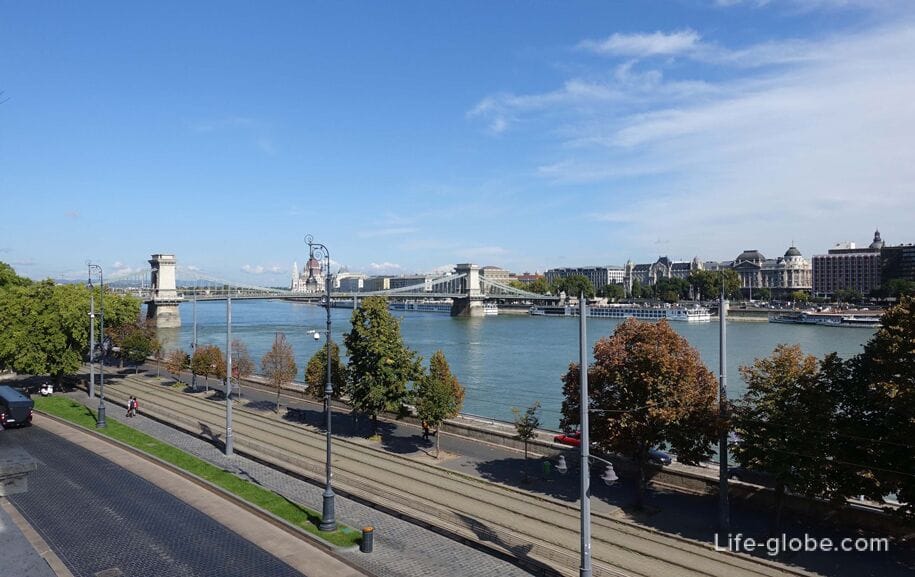
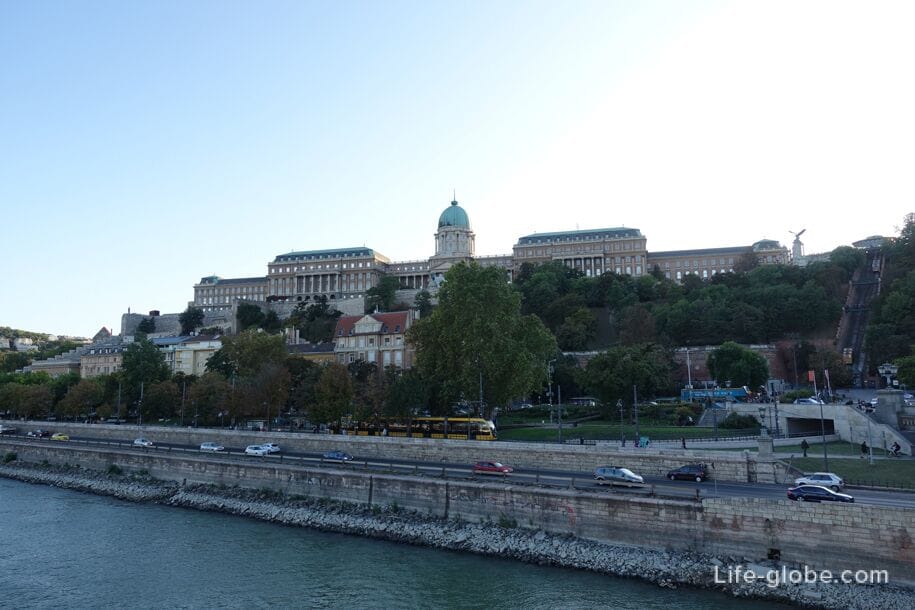
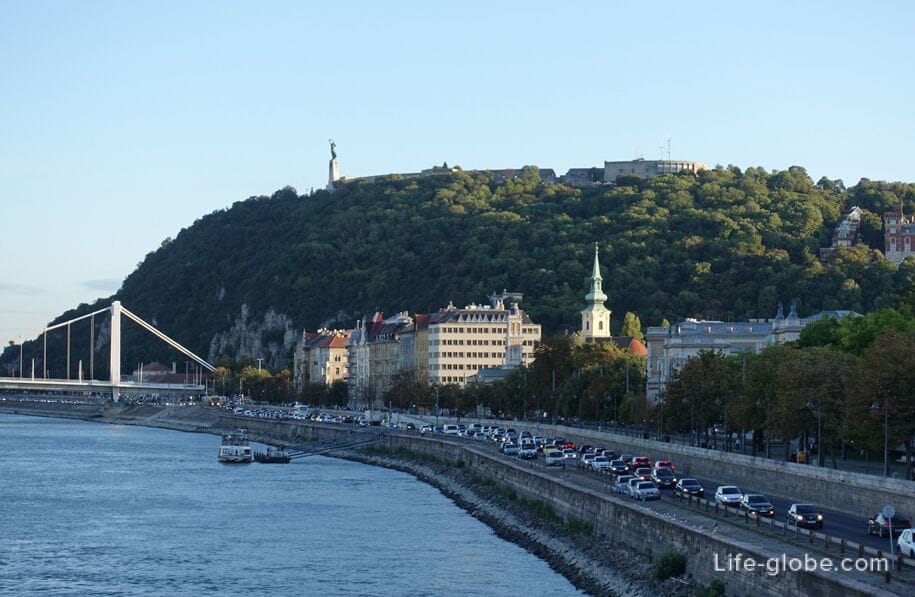
In this part of the promenade is remarkable:
- fairy tale Museum (address: Döbrentei utca 15);

- a historical monument and an exhibition on the First world war, opened in the exhibition hall of Varkert (address: Ybl Miklos ter, 5);
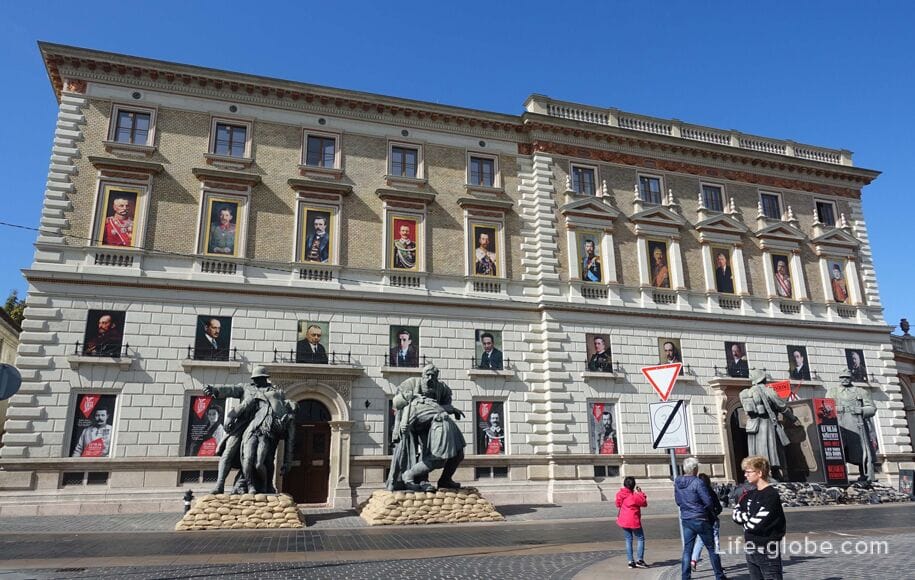
- Museum of the history of medicine named Semmelweis (Semmelweis Orvostörteneti Muzeum), which function as constant and changeable (temporary) exhibitions (address: Aprod u. 1-3);
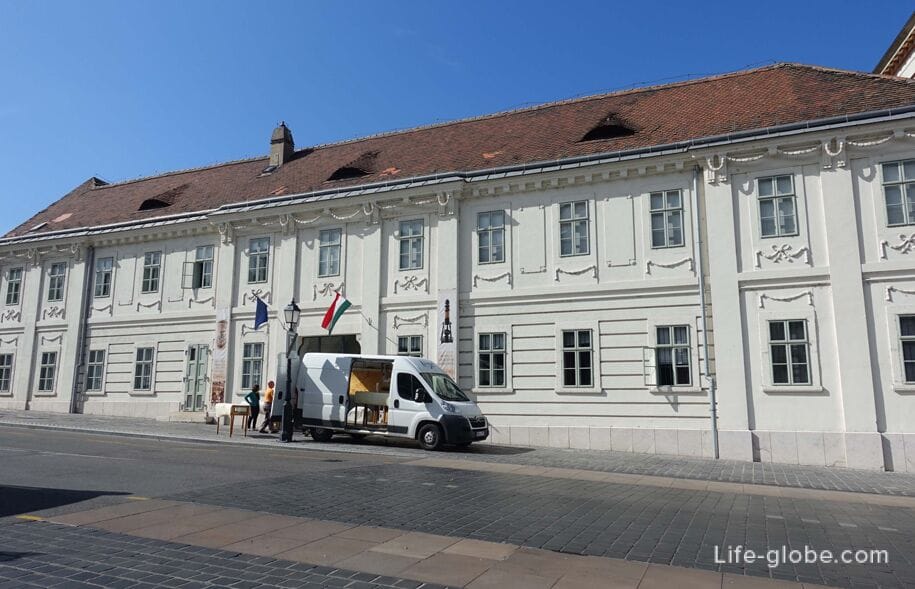
- Bazaar Royal garden (Castle Garden Bazaar, Hungarian name - Varkert Bazar / Varkert Bazaar), which is a series of arcades with galleries, pavilions and terraces in the neo-Renaissance style and is one of the architectural jewels of the historical part of Buda.
Bazaar, castle garden was constructed between 1875 and 1883 according to the project of Hungarian architect miklós Ibla.
Currently, the Market the Royal garden is an integral part of the Royal gardens, is a jewel of the waterfront, is part of the Buda castle and on its territory a venue for temporary exhibitions, holiday concerts, and various outdoor activities and indoors.

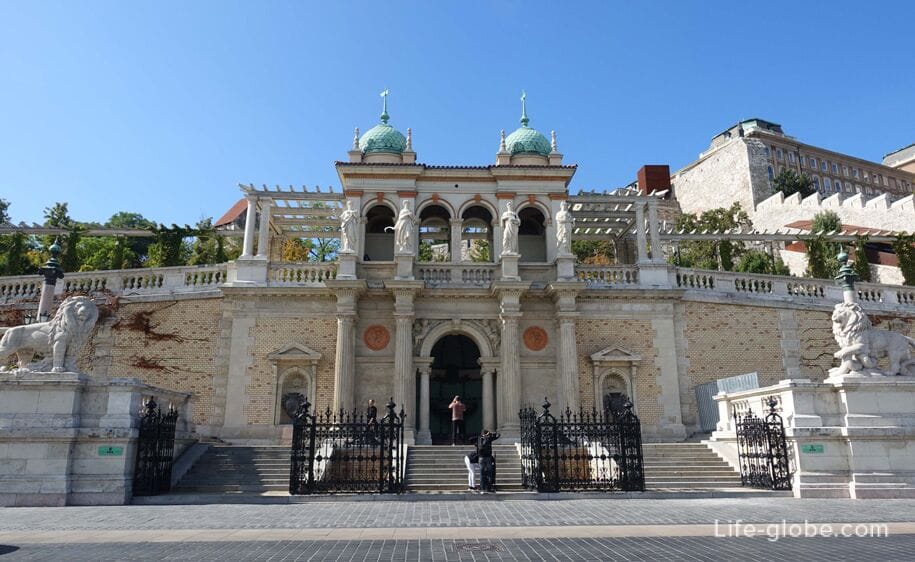
- Adam Clark square (Clark Adam ter), on which is located the lower station of the funicular to the Castle hill (the upper cable car station is located on St. George's square on Castle hill), the tunnel under the Castle hill and kilometre Zero ("0" kilométerkő), which is a three-meter stone sculpture in the form of numbers "0" (zero), which symbolizes the beginning of the starting point of the main road kilometre numbering for the road network of Hungary;
Photo of Adam Clark square and the lower station of the funicular
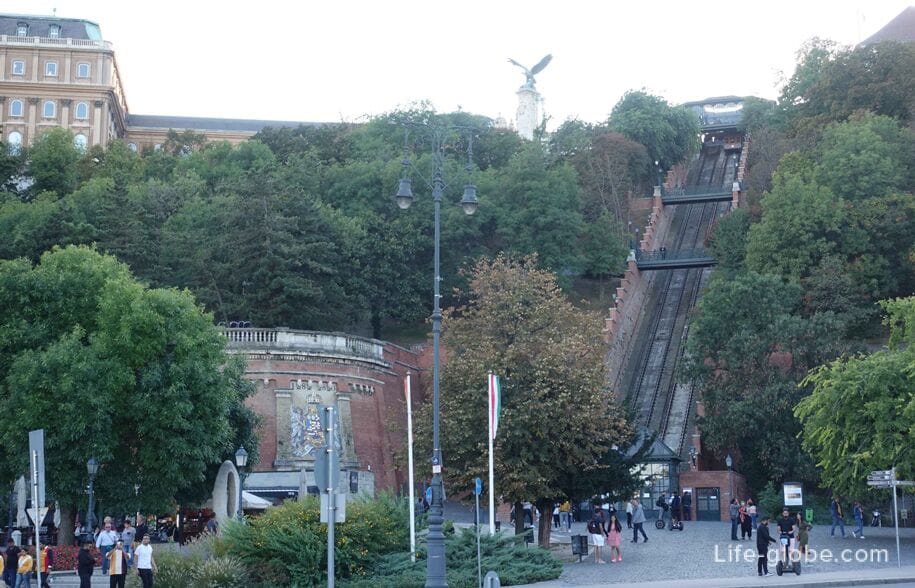
Photo of sculpture "Zero kilometer"
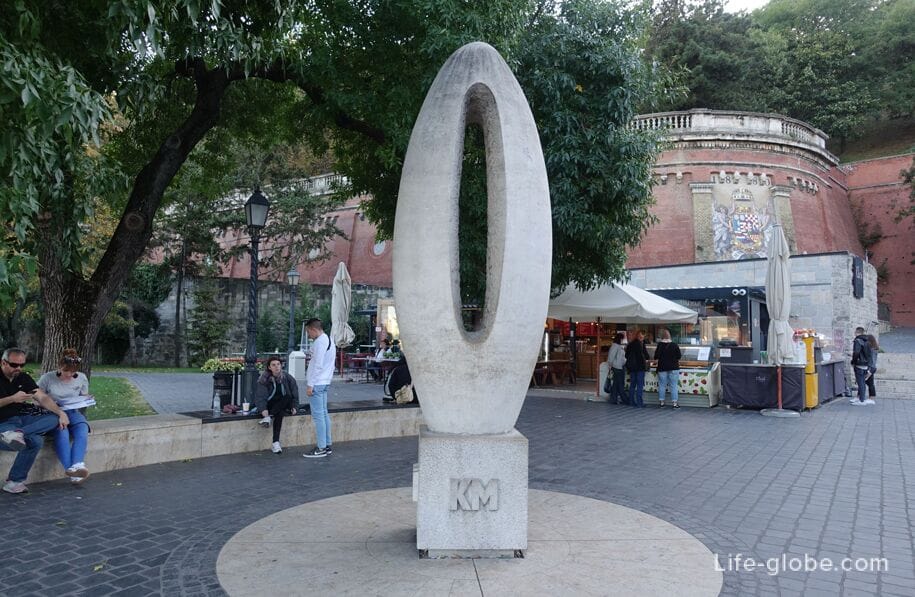
Photo of the tunnel under the Castle hill
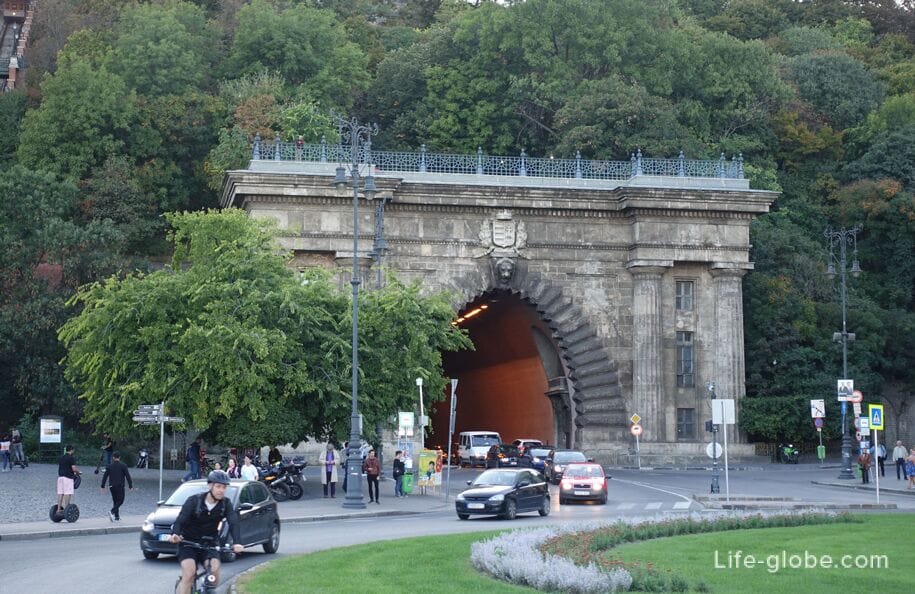
The Buda embankment between the Chain bridge and Margaret bridge
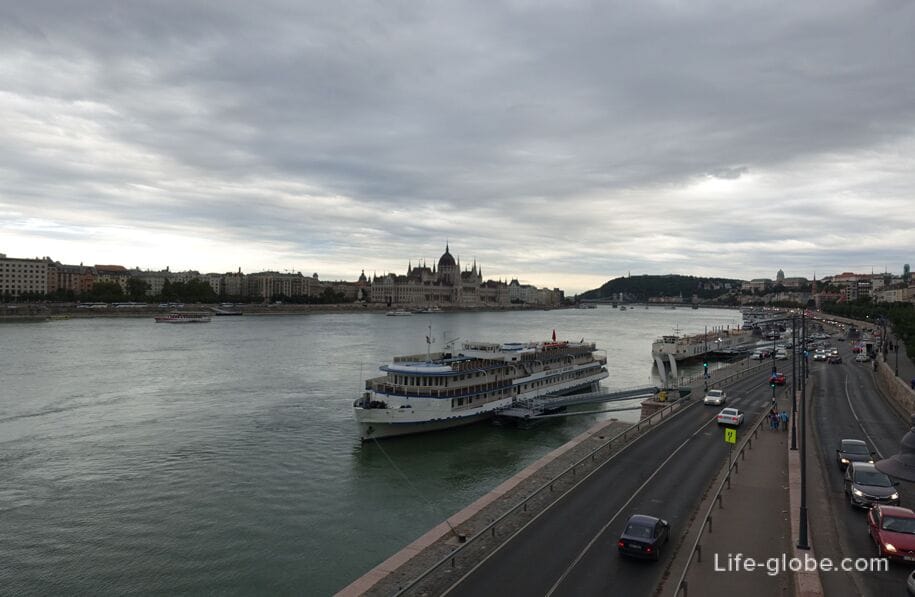
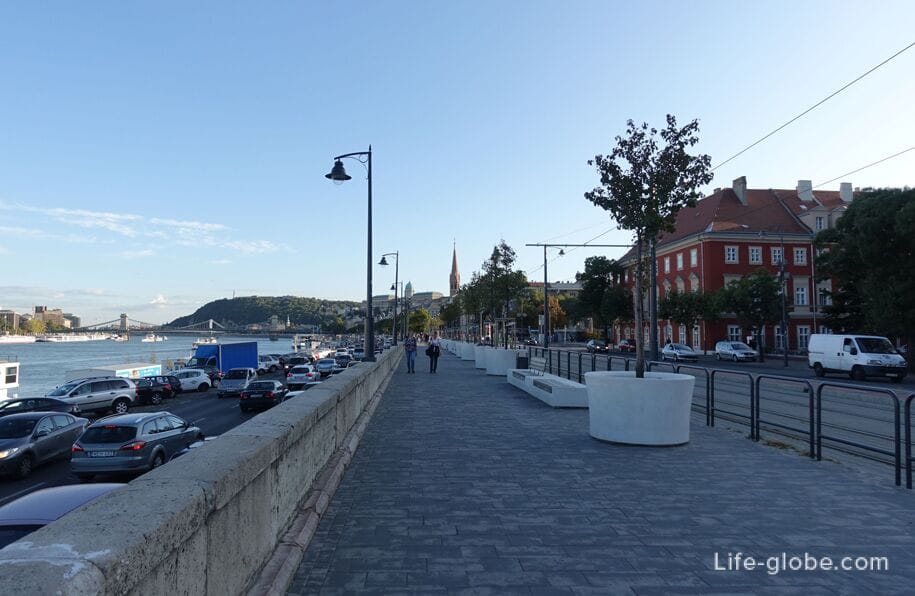

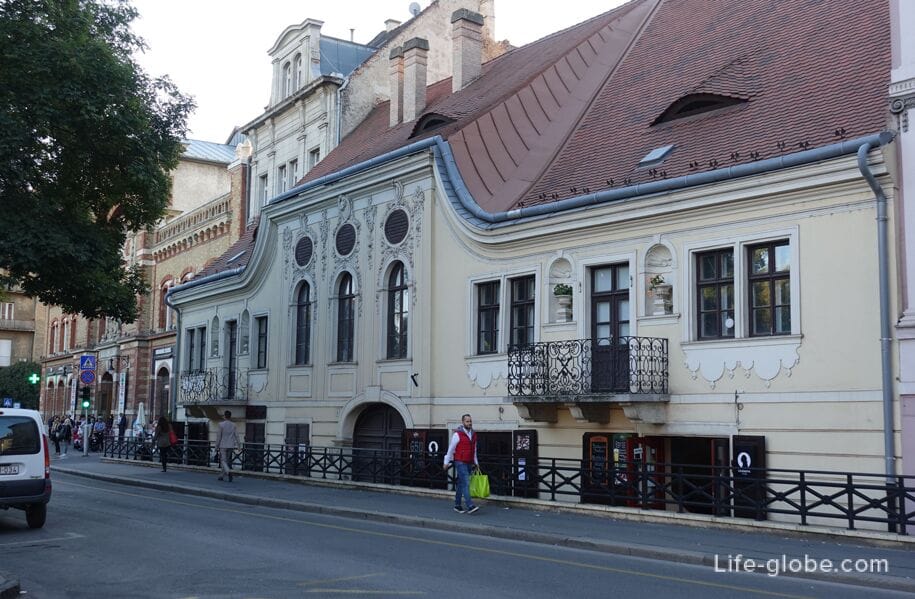
In this part of the promenade is remarkable:
Church of St Anne's (address: Batthyány tér 7);

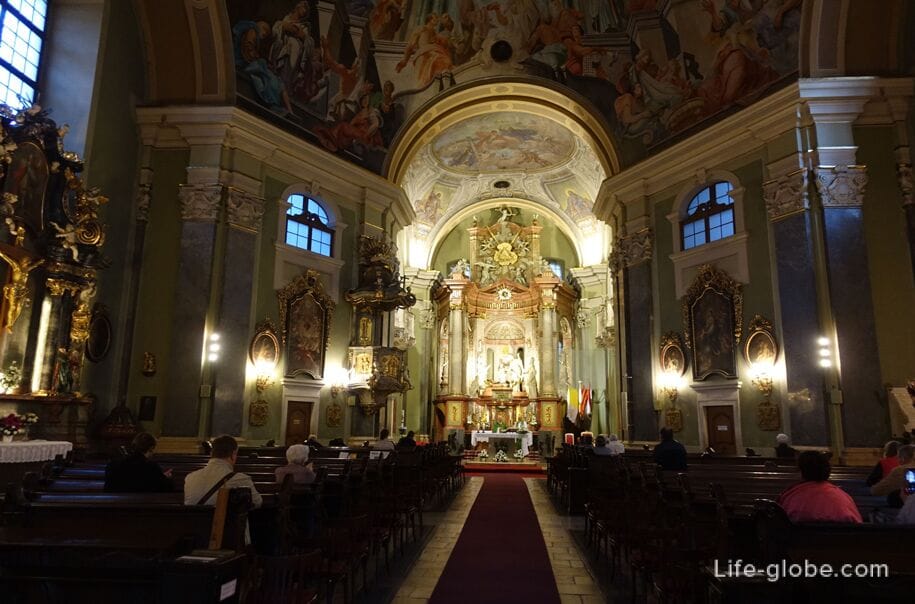
market (VI. Vasarcsarnok), located in a historic building;
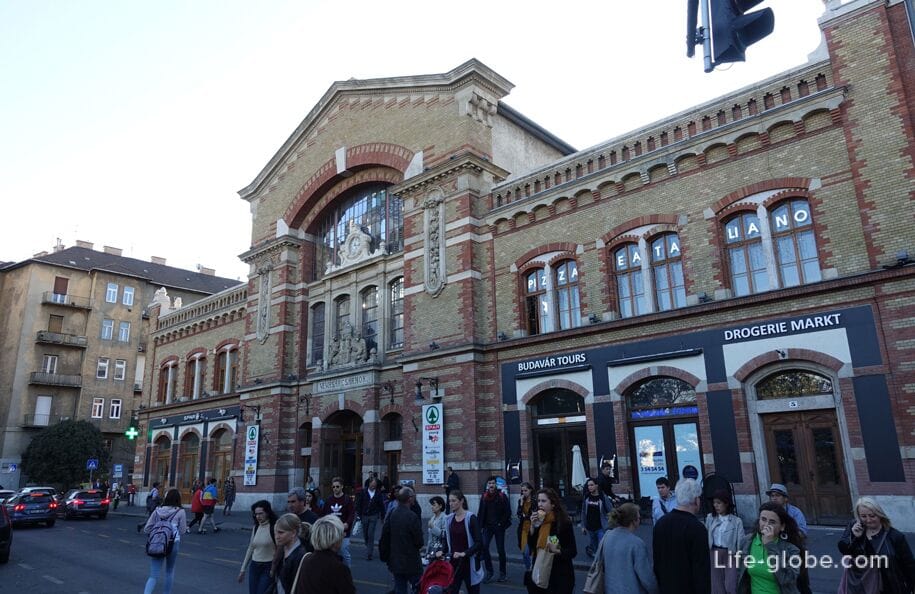
- reformed Church on the square in the bowl of silage.
